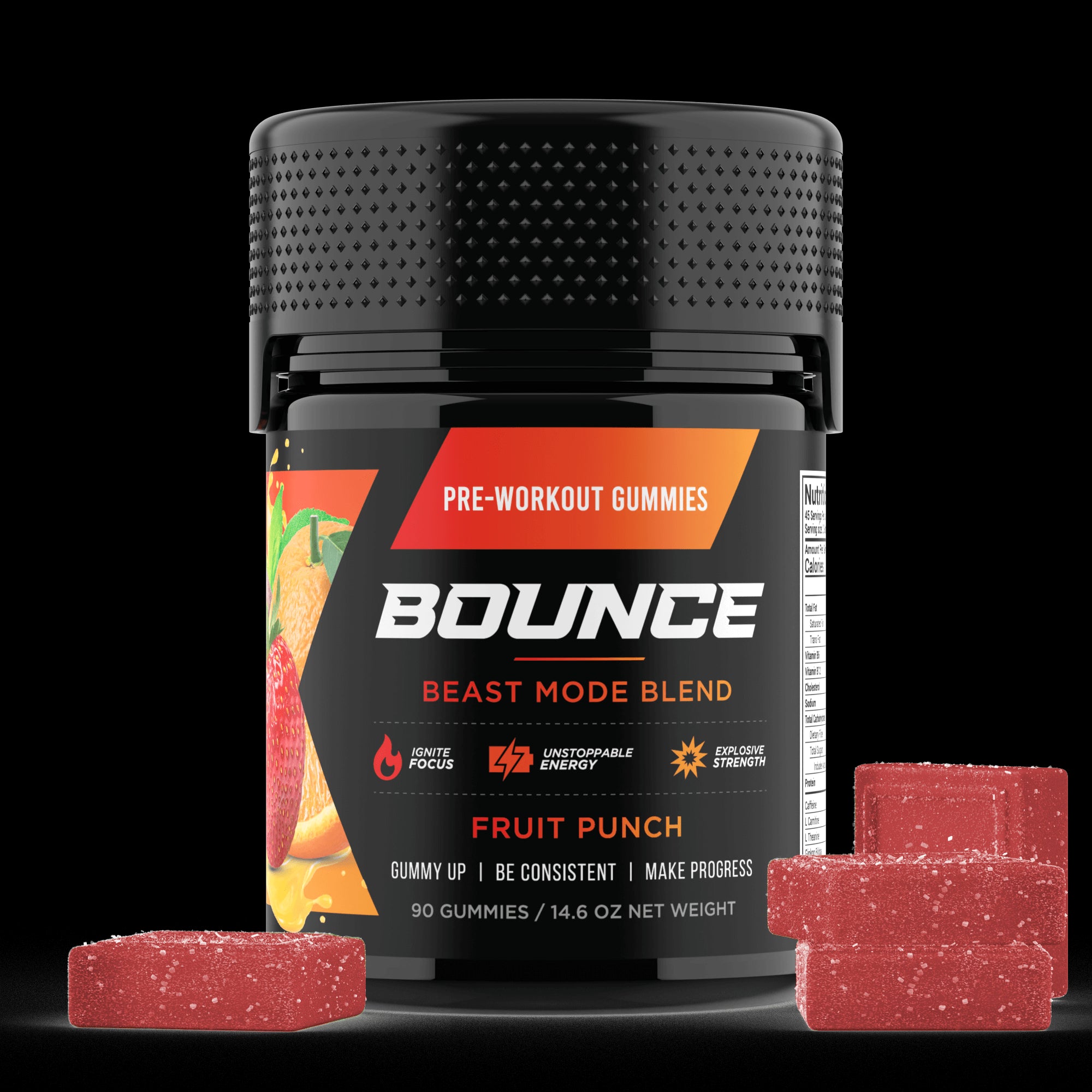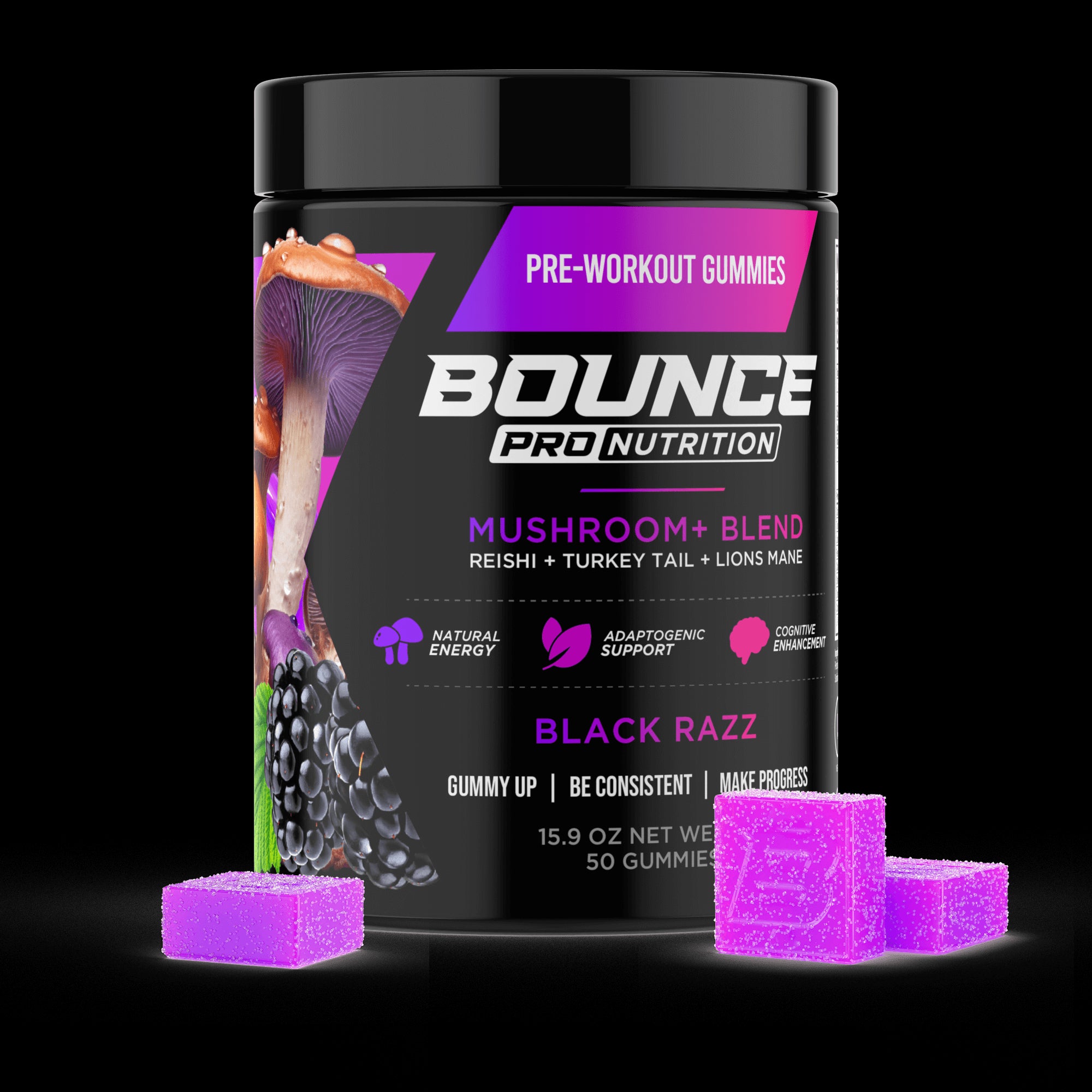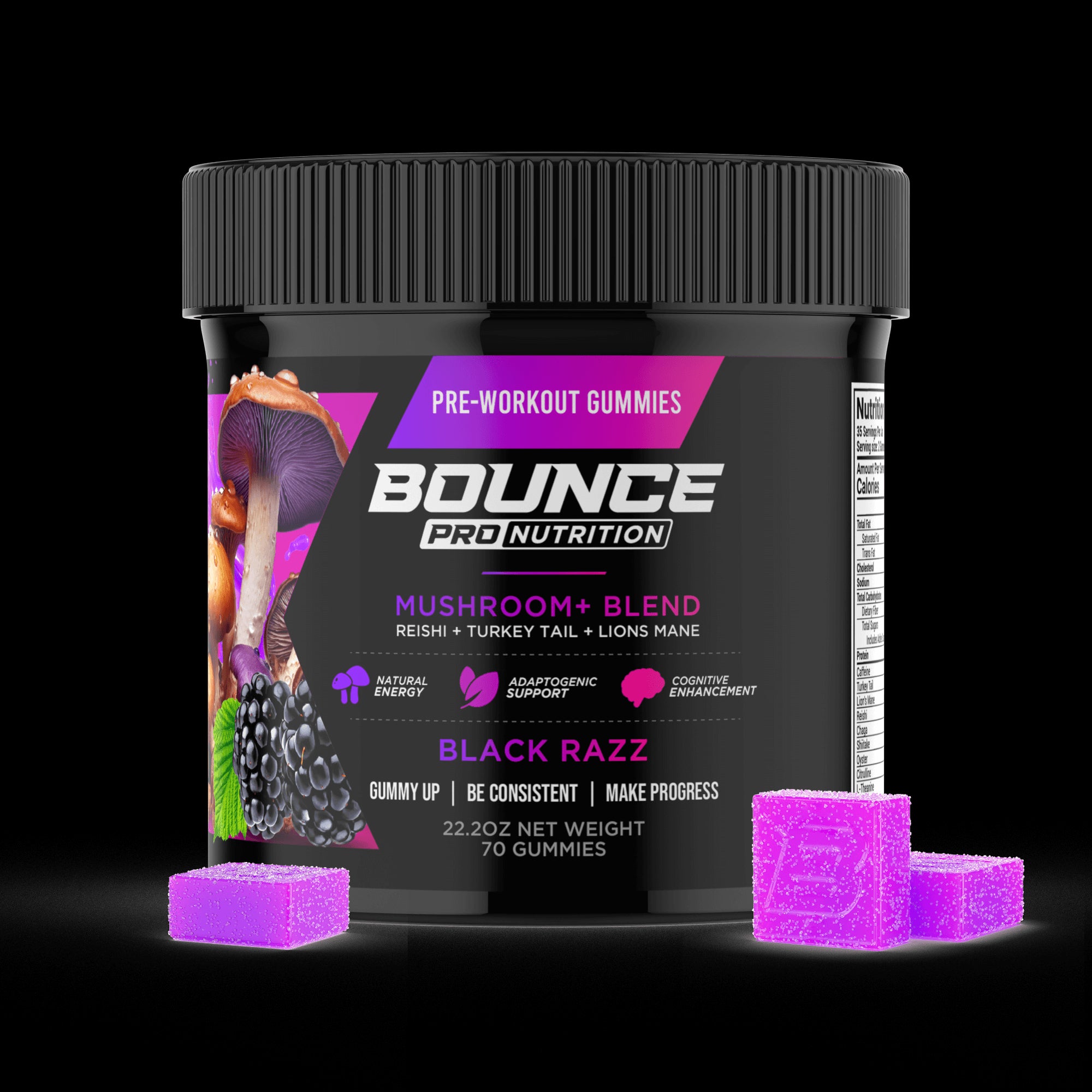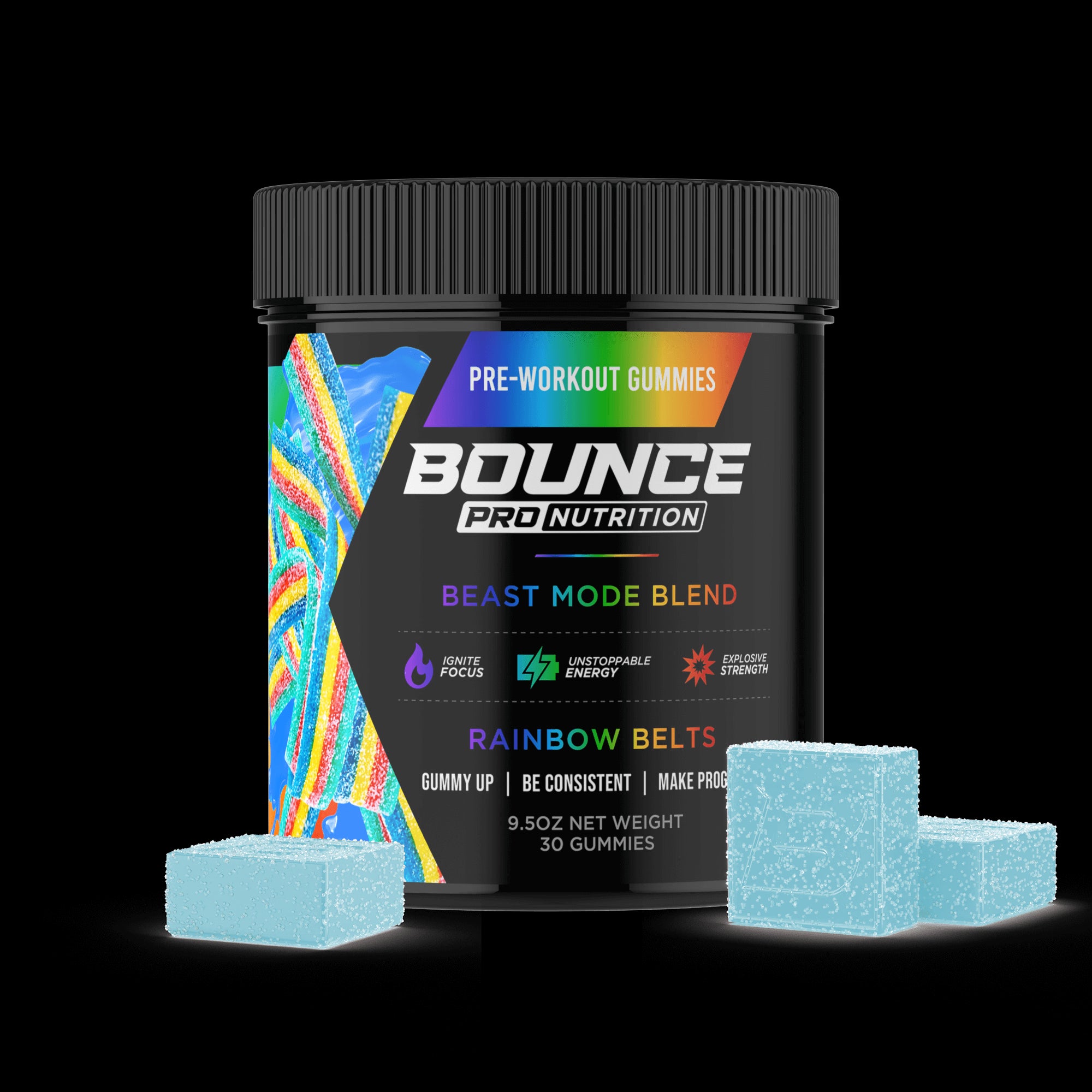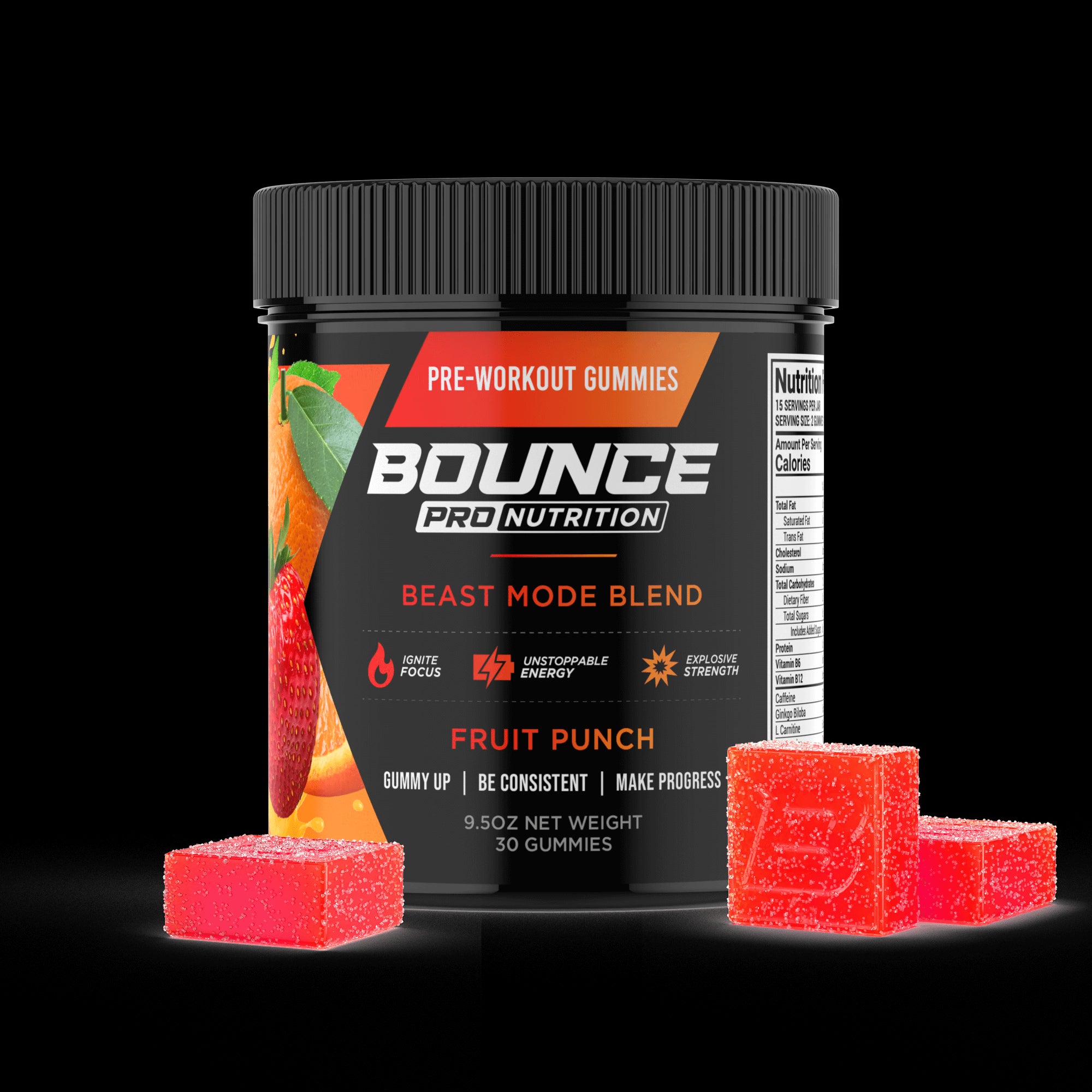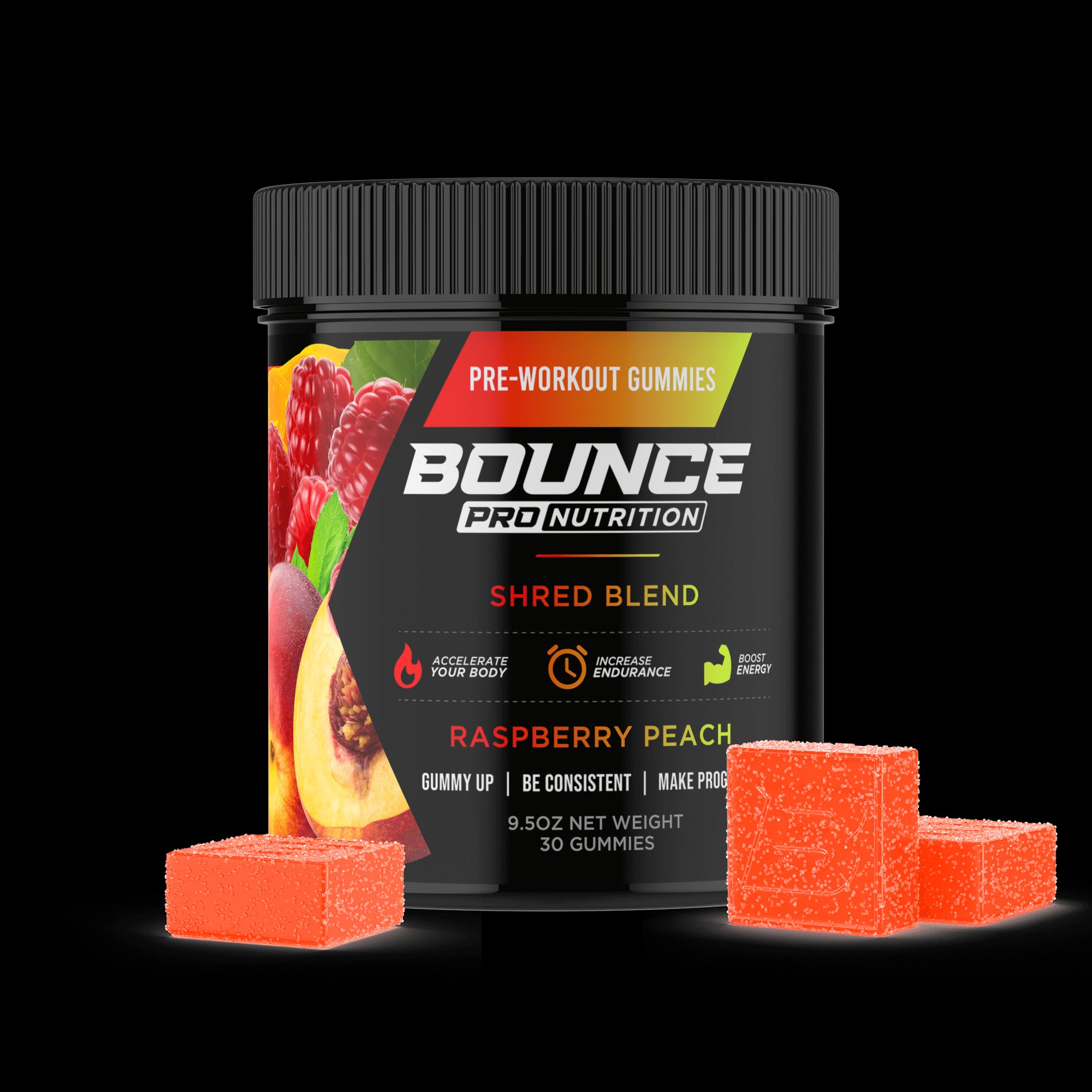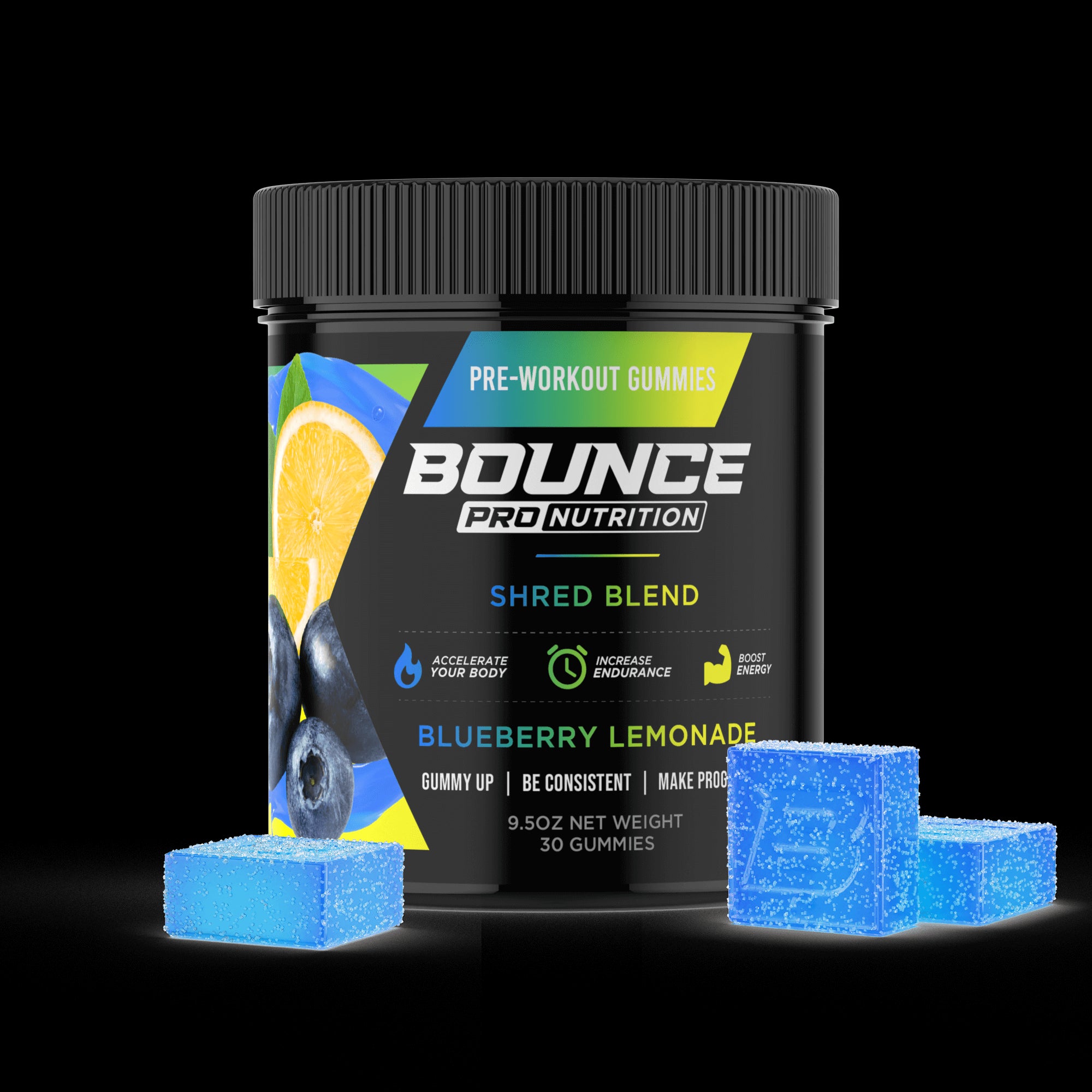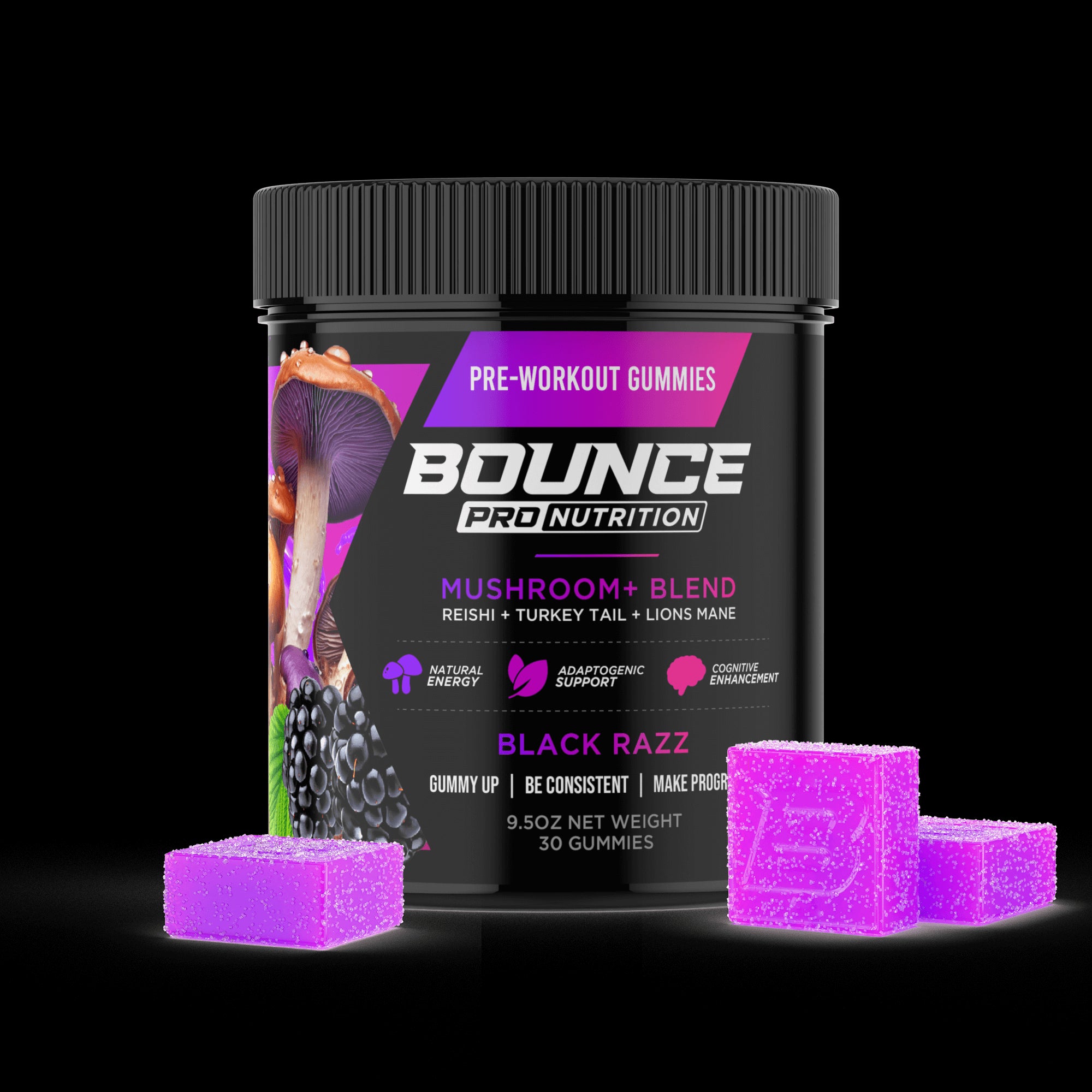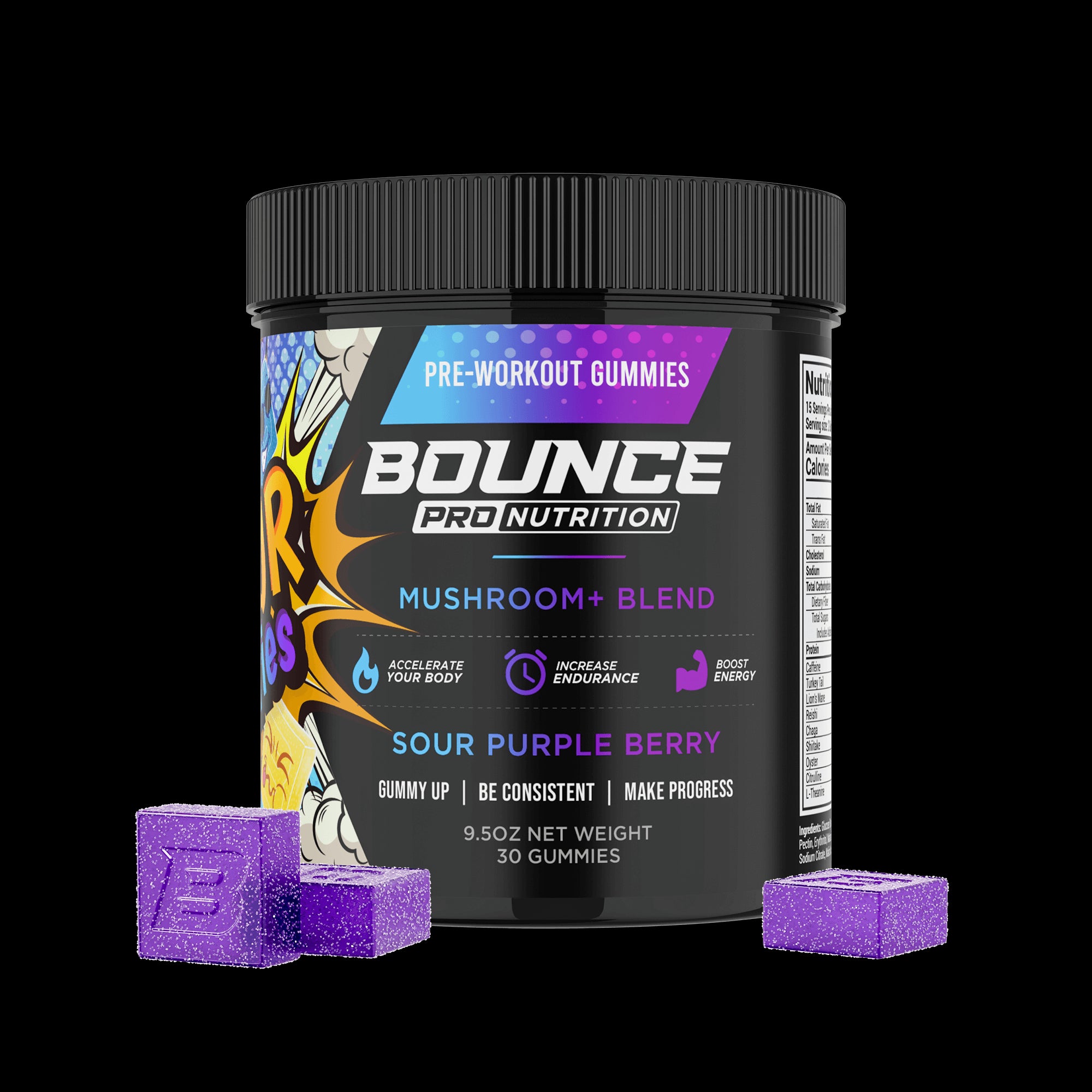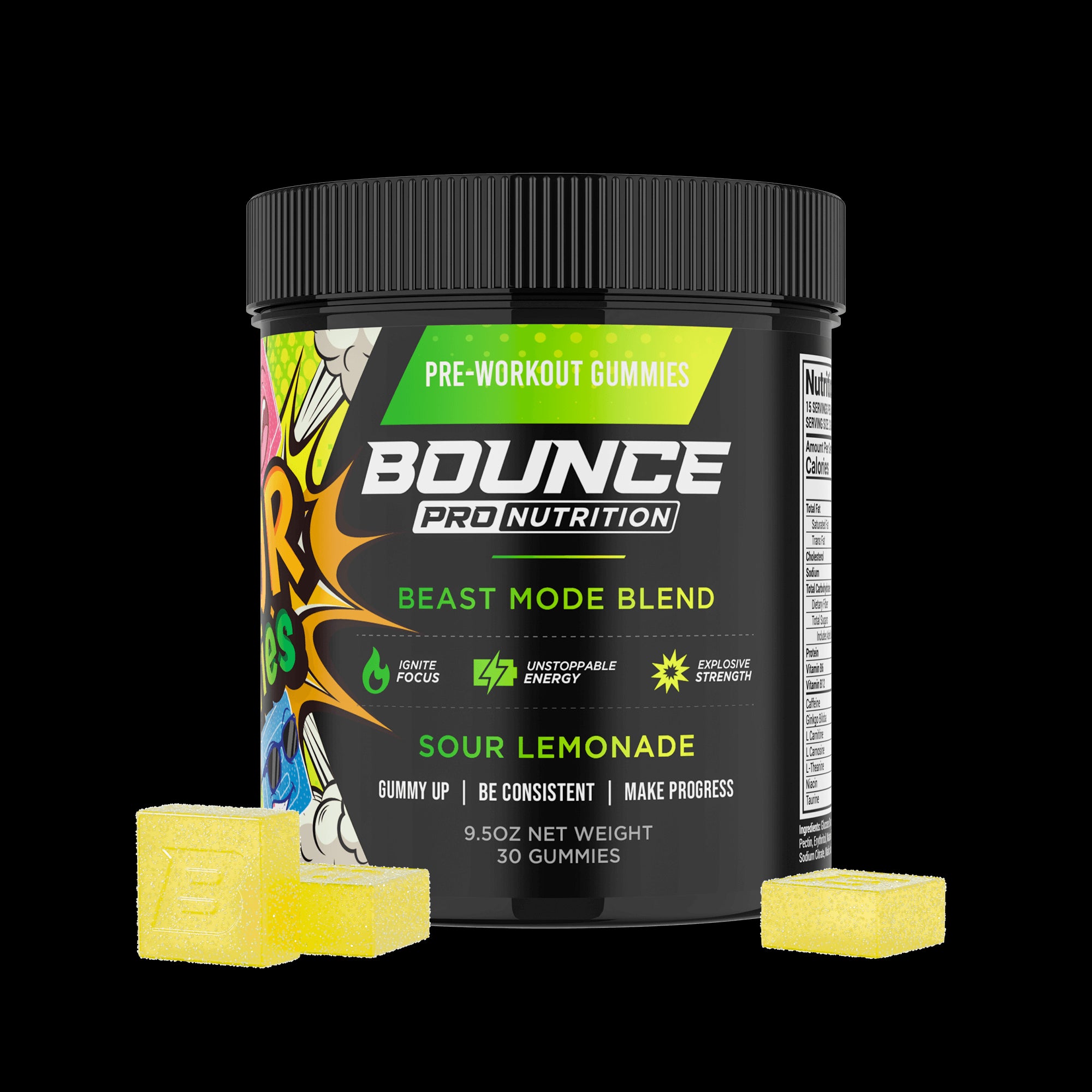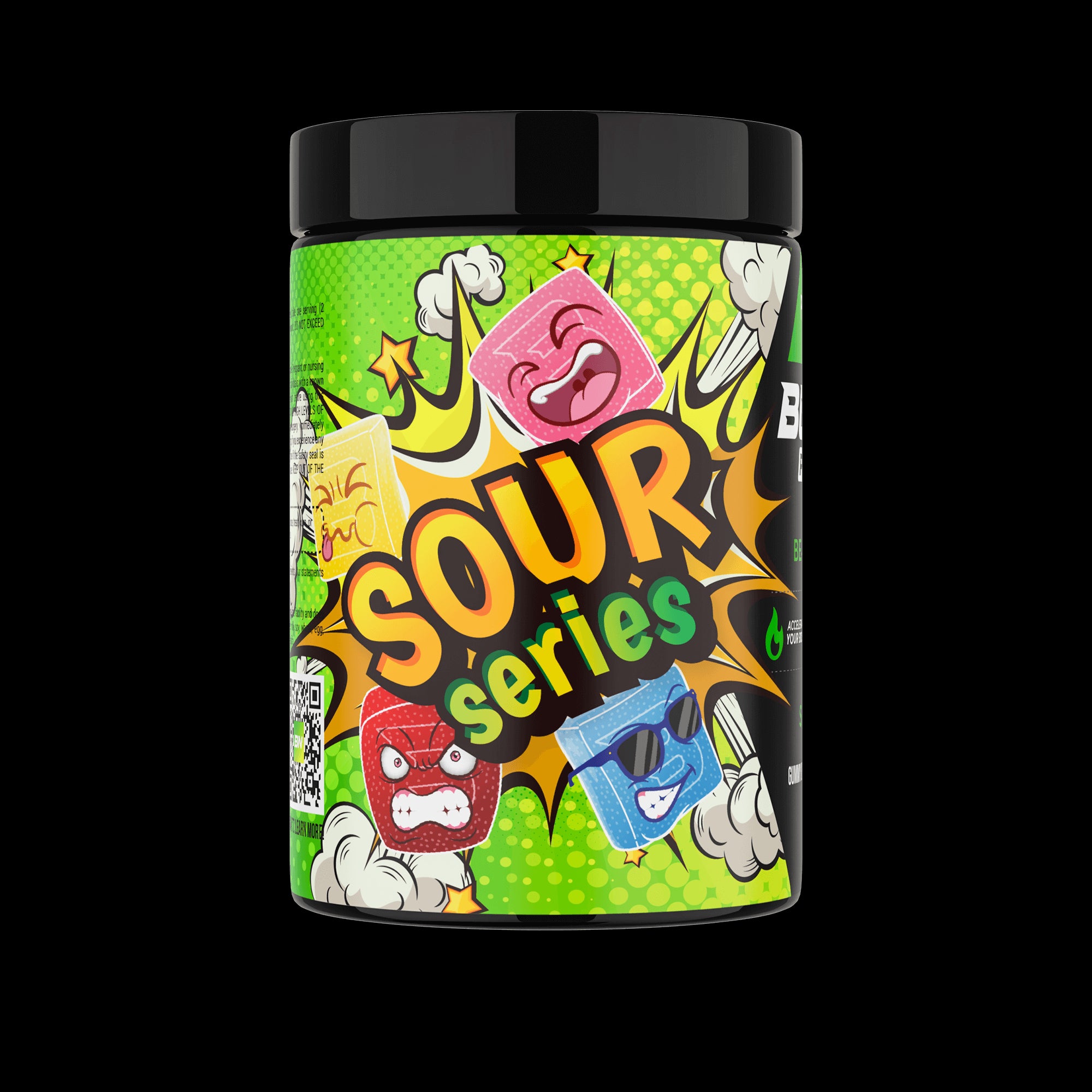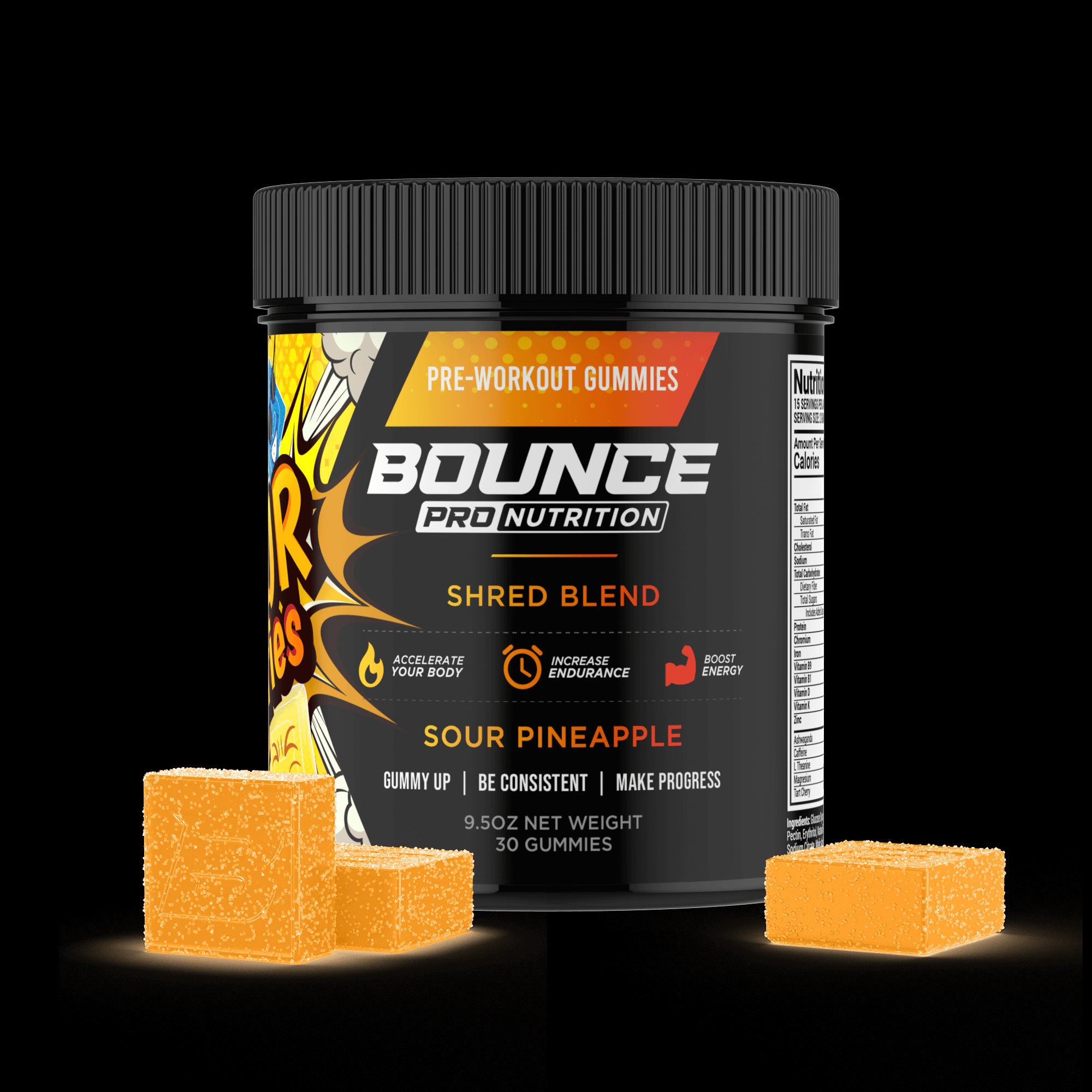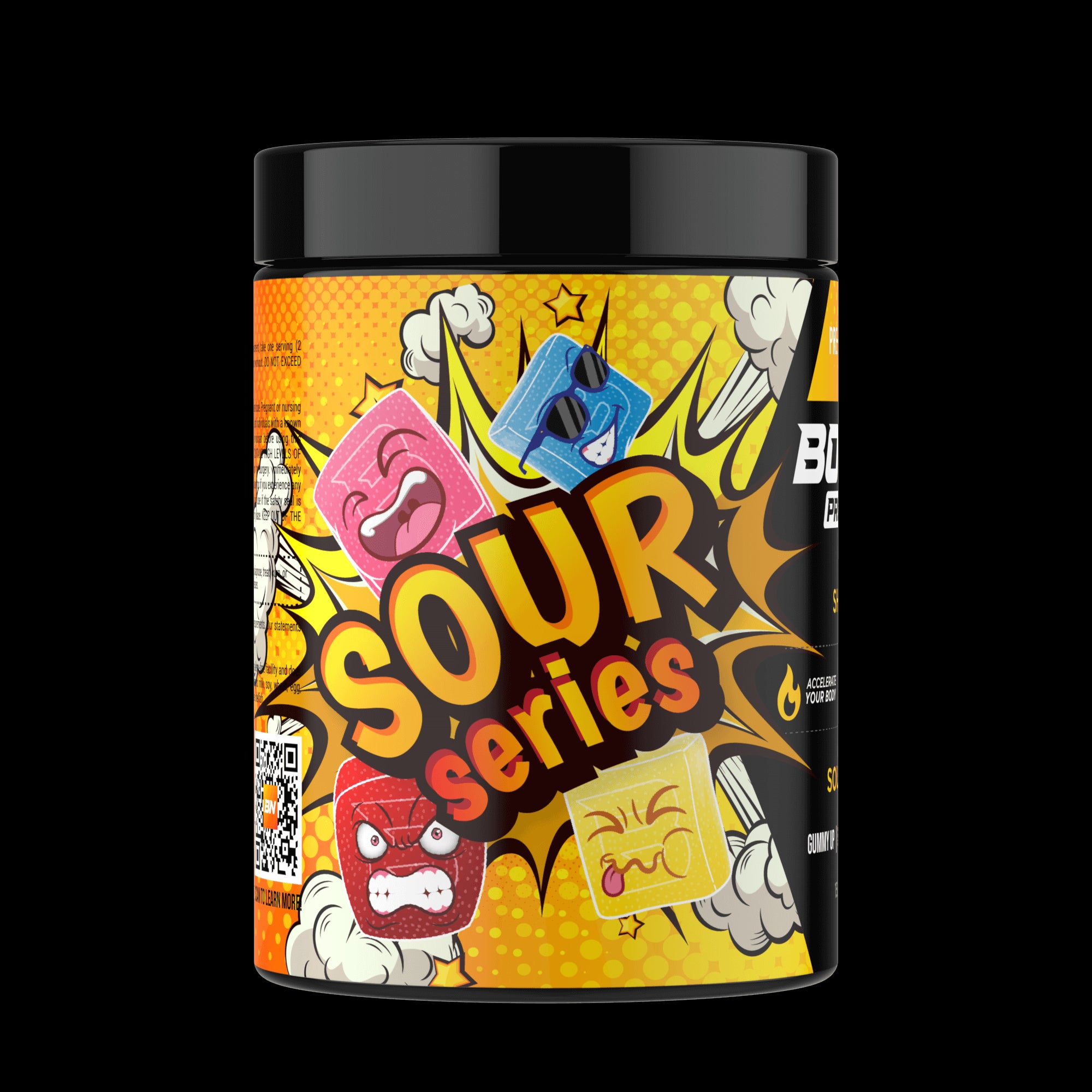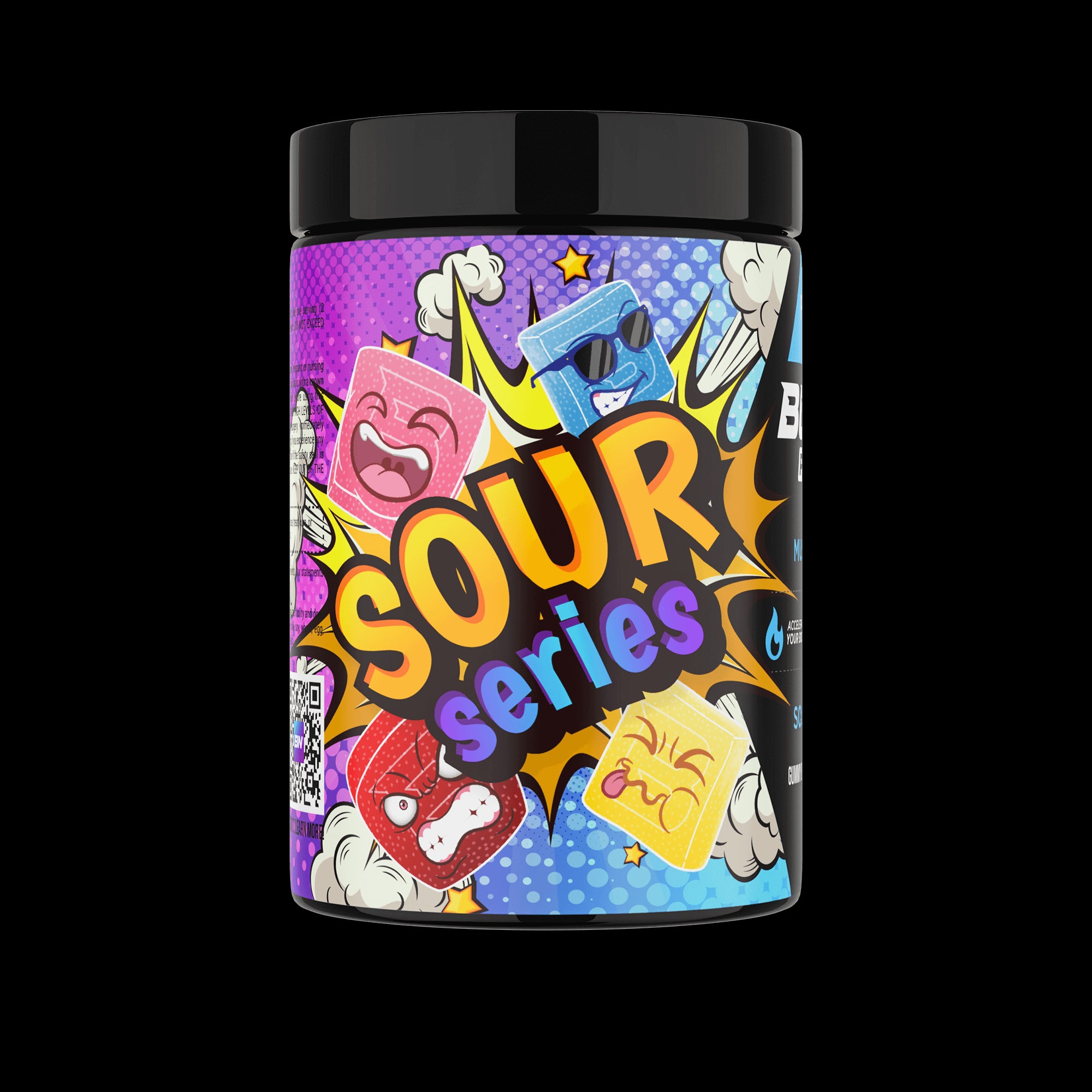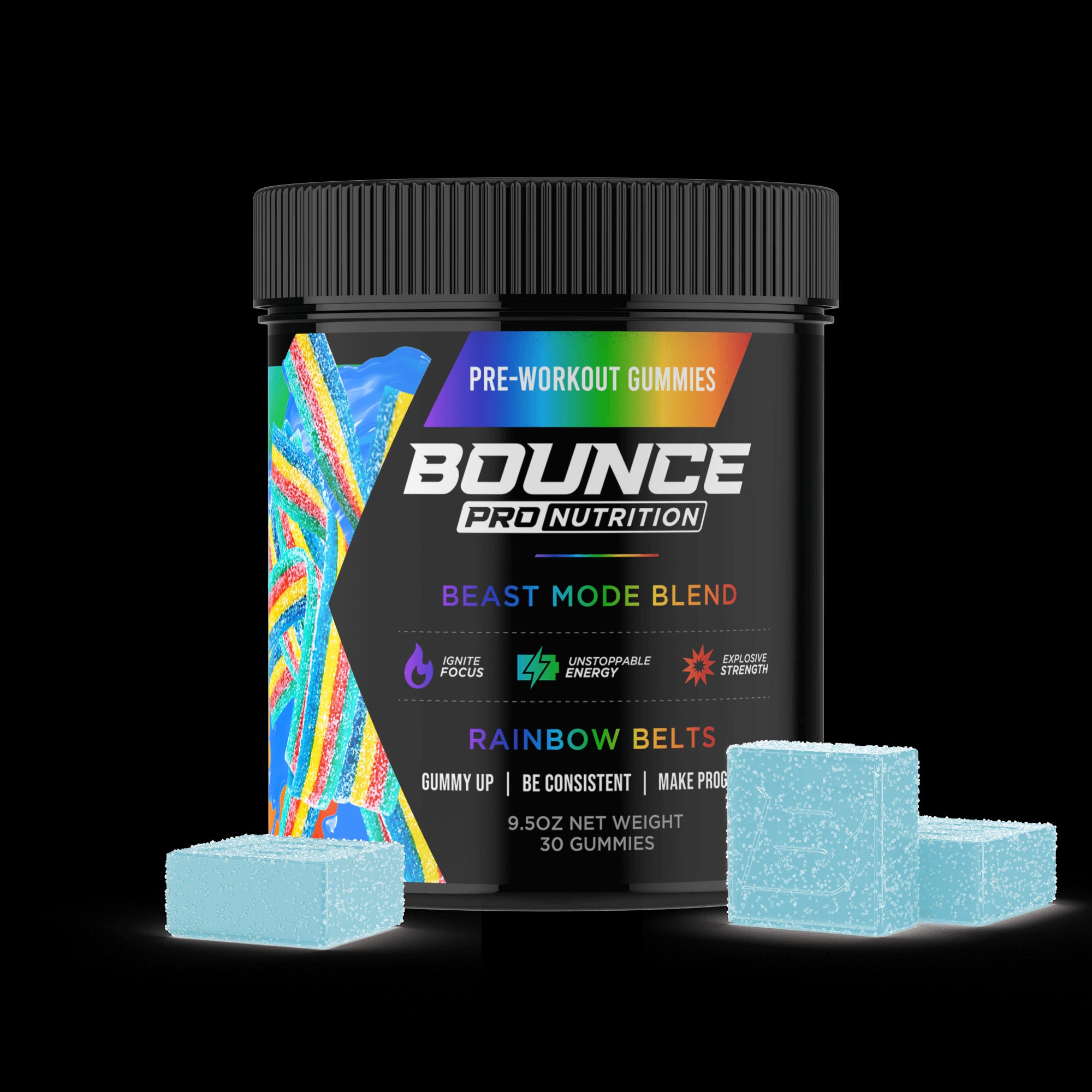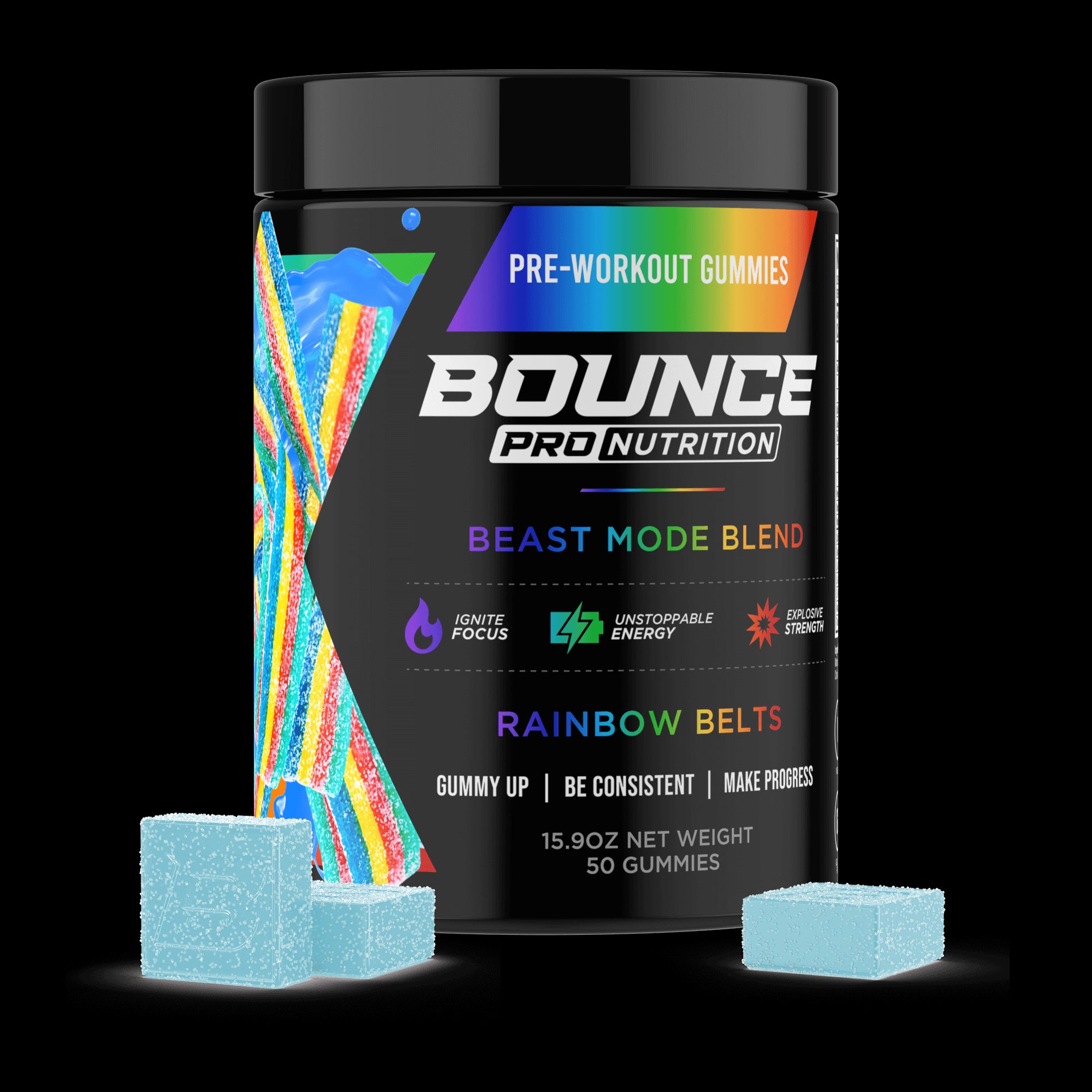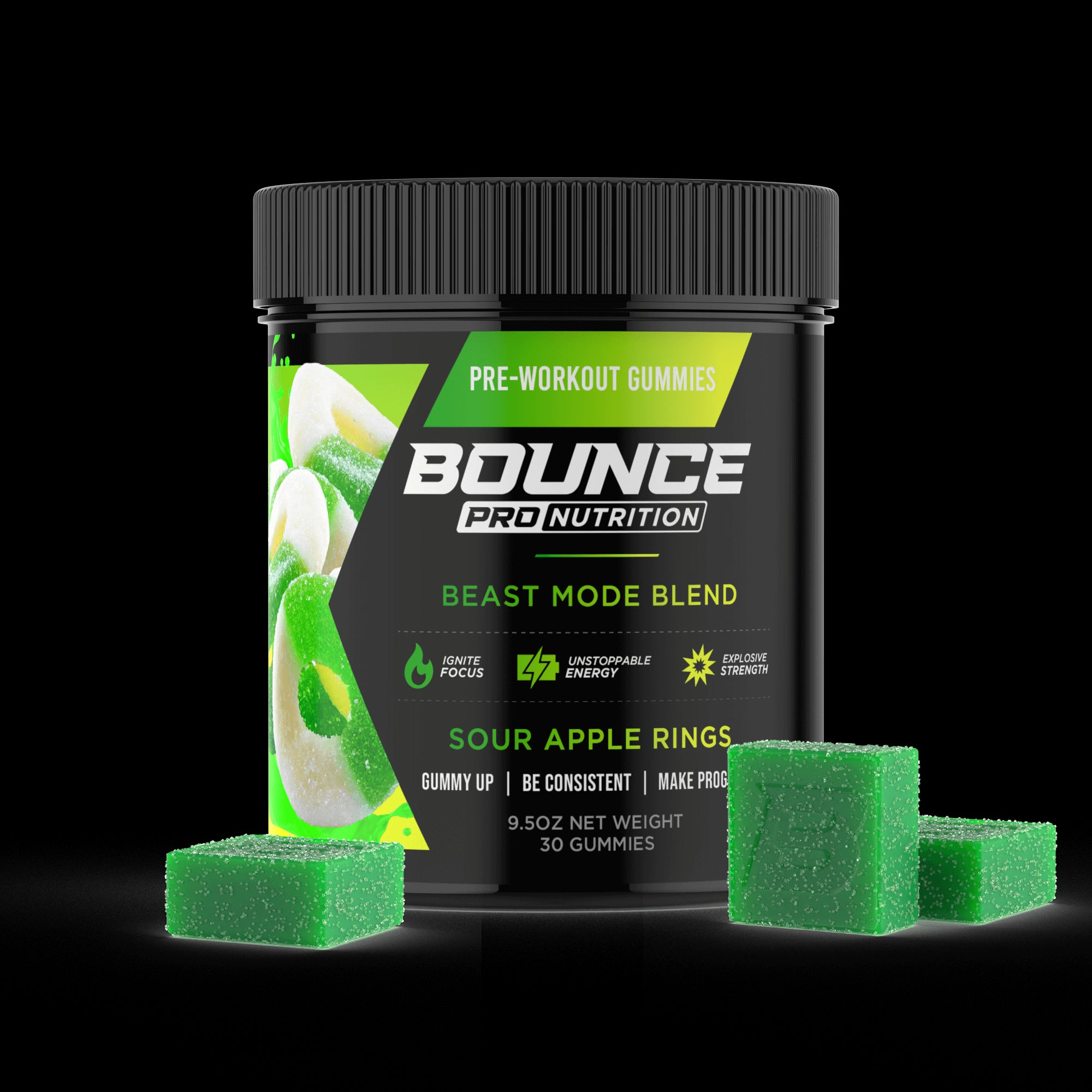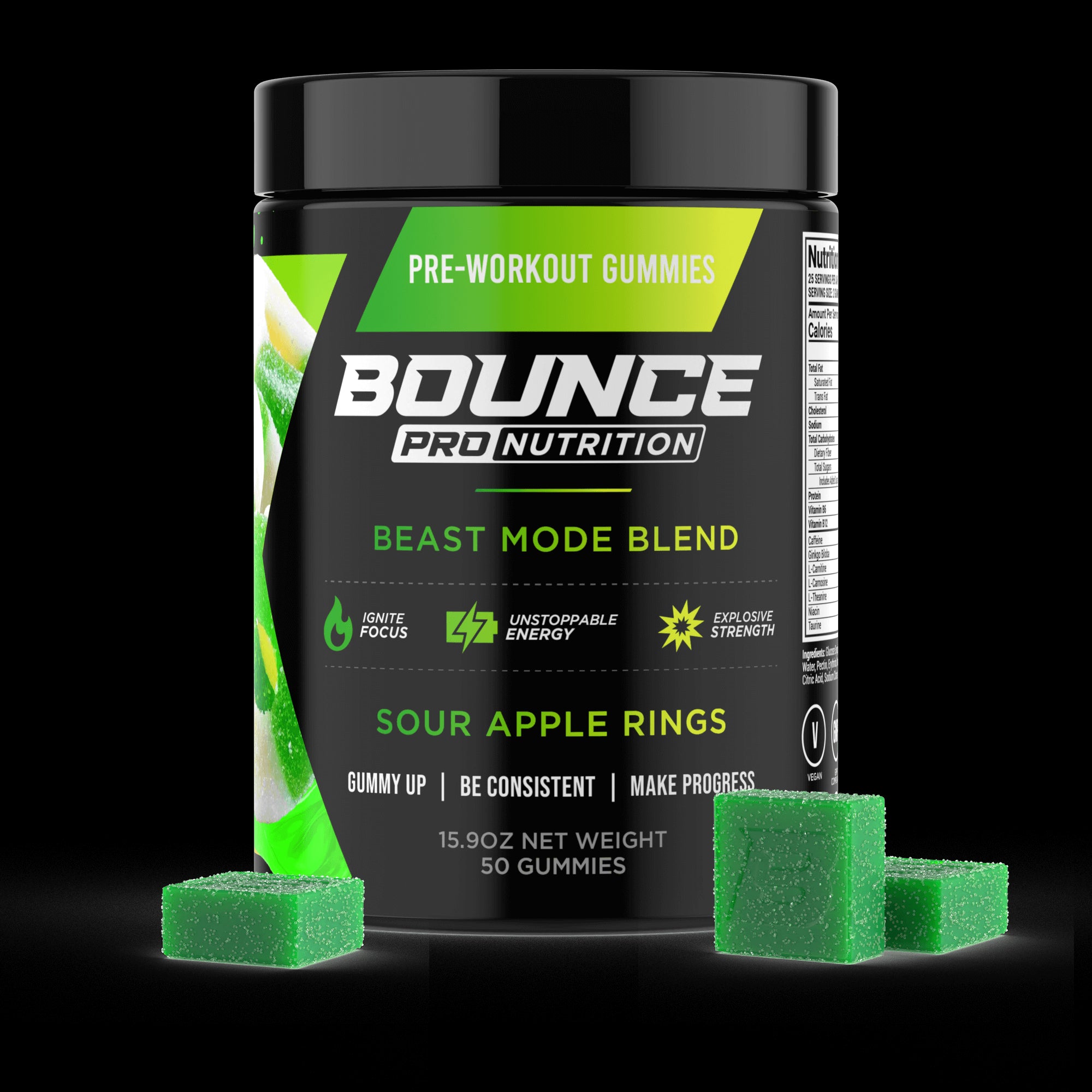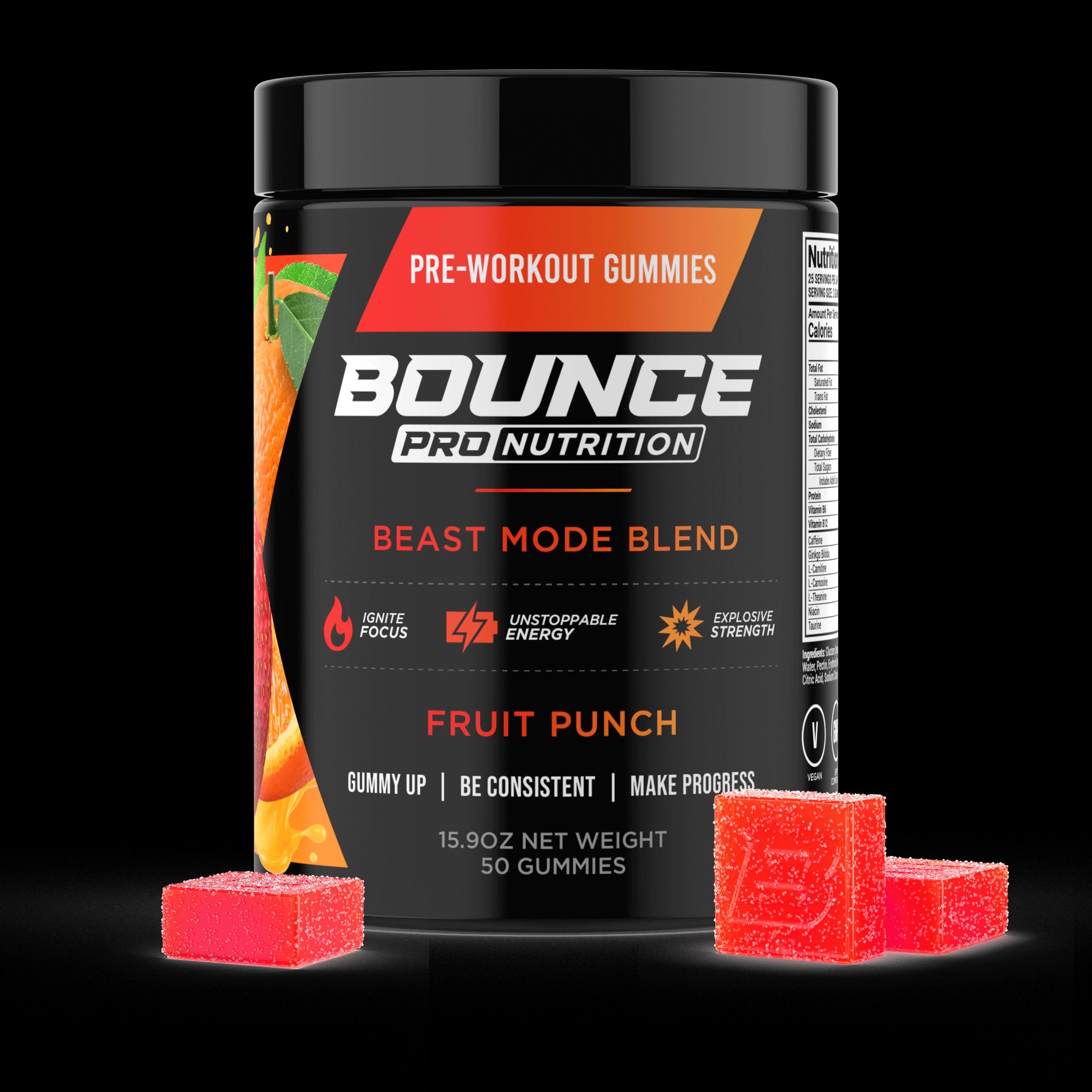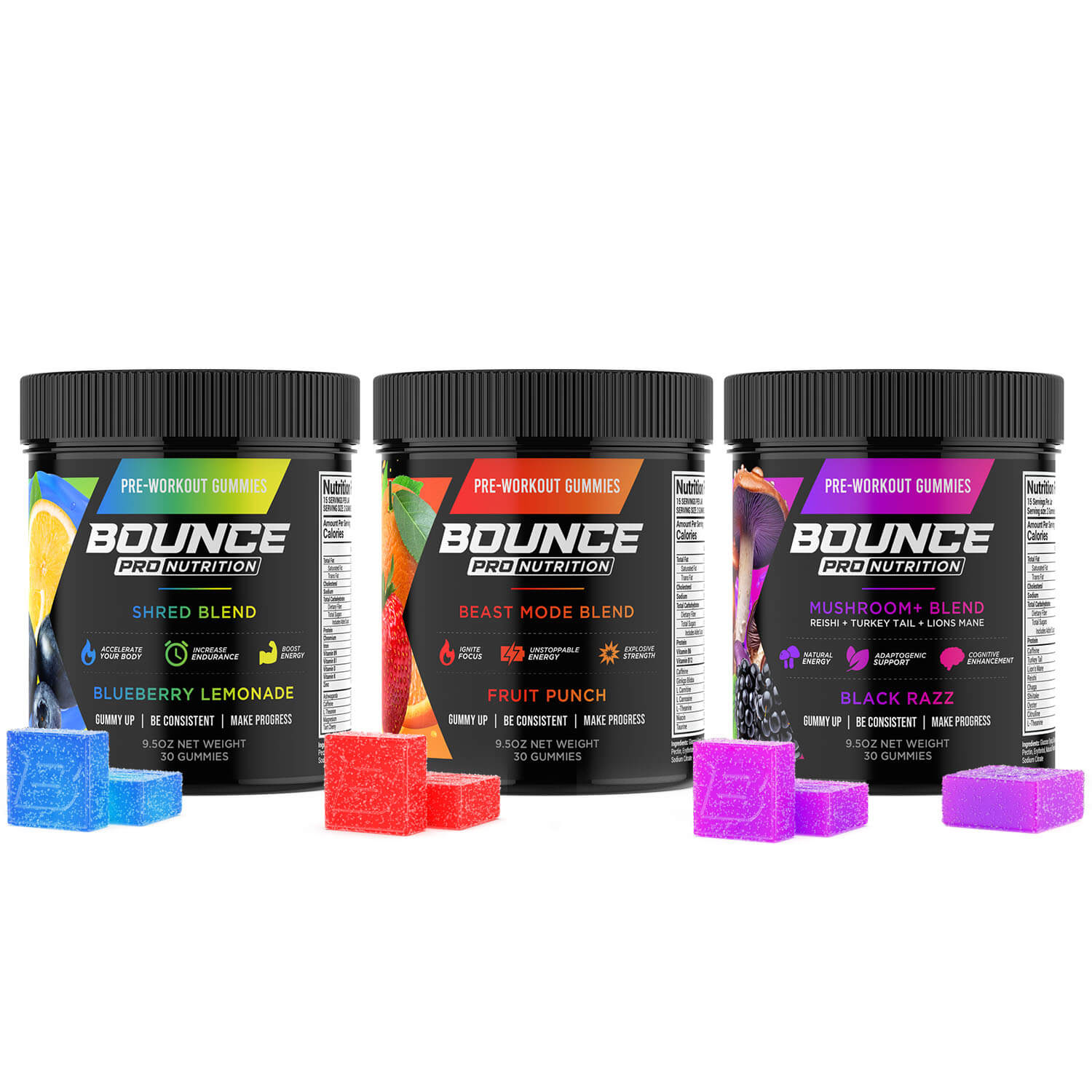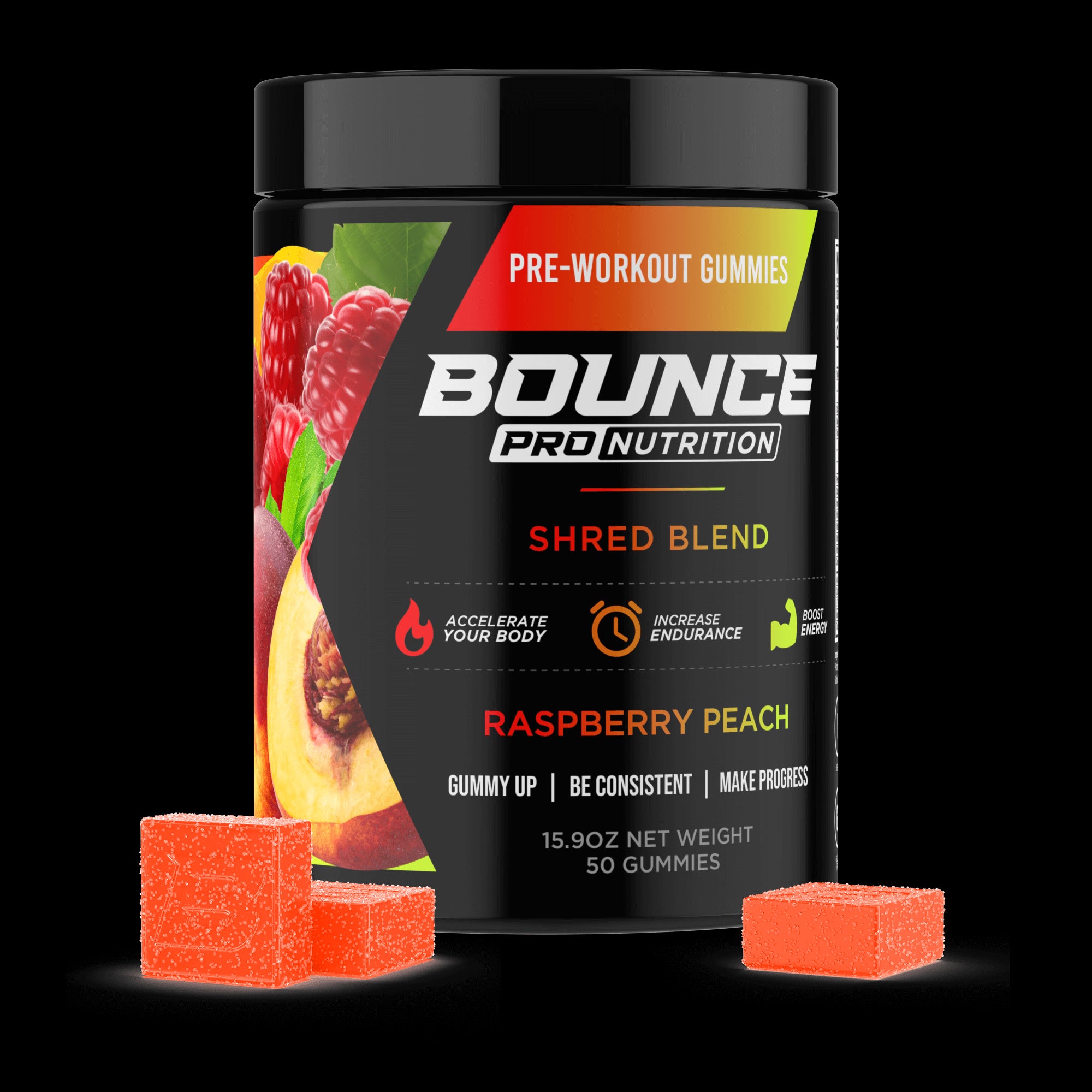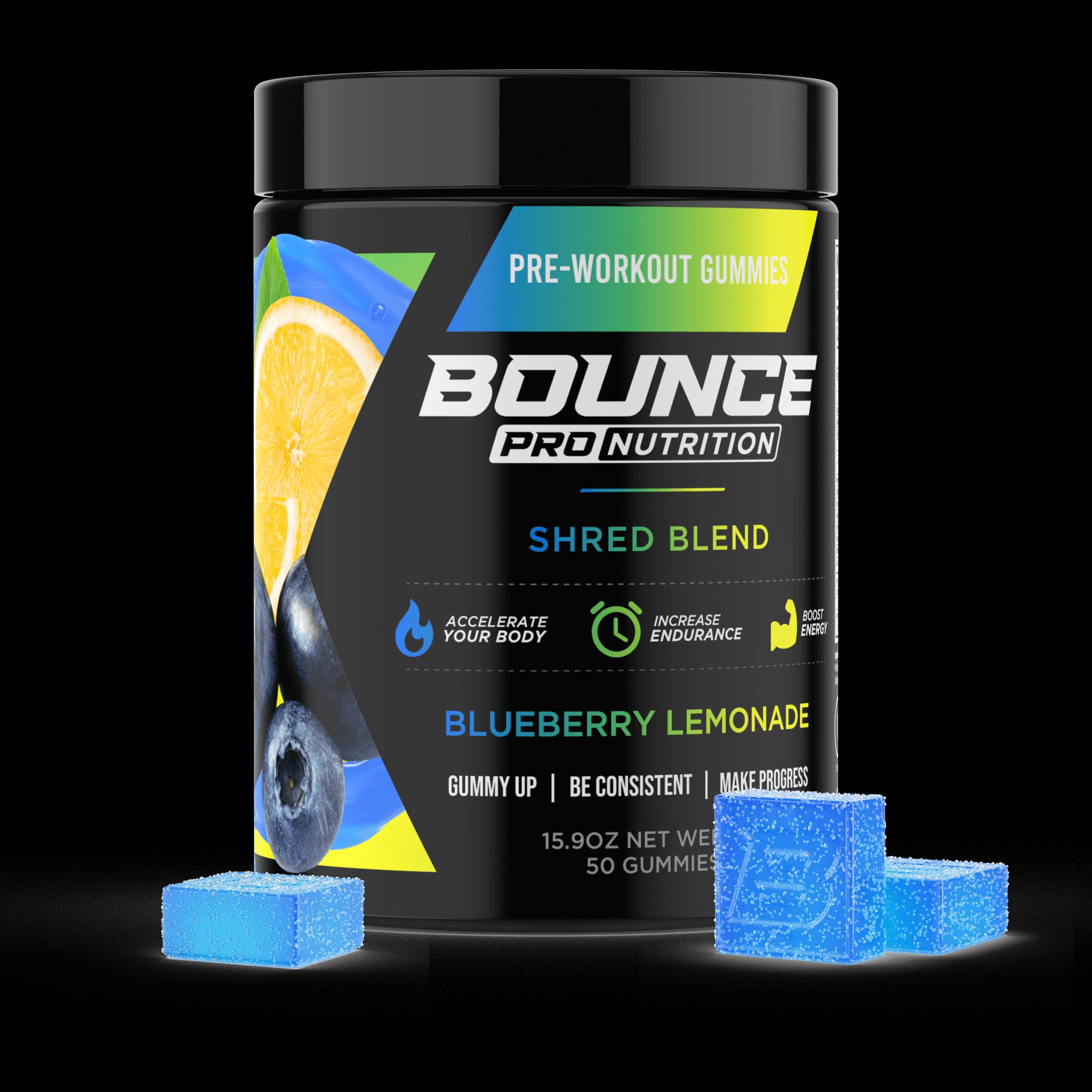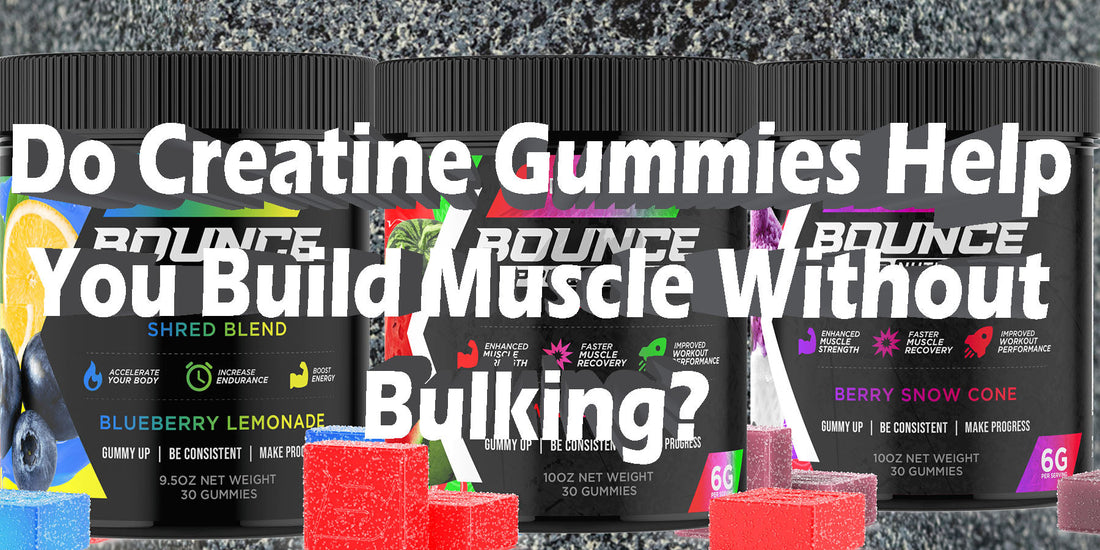In the world of fitness, the goal for many is elegantly simple: to become a stronger, more capable version of themselves. This often involves building lean, toned muscle—the kind that not only looks great but also improves metabolic health and makes everyday life easier. For decades, creatine has been lauded by scientists and athletes alike as one of the most effective and reliable tools for achieving this very goal. Yet, despite the mountain of evidence supporting its benefits, a persistent myth has often stopped many people, especially women, from even trying it.
That’s right, the fear of “bulking up” or getting puffy has created a significant barrier to entry. This concern, however, is rooted in a fundamental misunderstanding of how both muscle growth and creatine truly work. You see, the new and convenient creatine gummy format provides the perfect opportunity to re-examine this old fear. It invites us to have an honest conversation, separating the fiction of unwanted bulk from the powerful reality of lean muscle gains, and to discover how this supplement can be a perfect partner in building a strong, athletic physique without adding unwanted size.
TO BUY CREATINE GUMMIES CLICK HERE
Why Do Most Fitness Enthusiasts Workout to Build Muscle?
The motivation to build muscle is a multifaceted and deeply personal one that extends far beyond the simple desire for a more aesthetic physique. While looking toned and athletic is certainly a rewarding outcome, for most fitness enthusiasts, the "why" behind their dedication to resistance training is much more profound. At its core, building muscle is about enhancing one's functional capacity and overall quality of life.
Every pound of lean muscle gained is metabolically active tissue, meaning it burns more calories at rest than fat does. This contributes to a healthier body composition and makes weight management more efficient over the long term. Furthermore, stronger muscles provide better support for our joints and skeleton, improving posture, reducing the risk of injury, and making everyday tasks like carrying groceries or playing with children feel effortless.
From a performance standpoint, building muscle is the very engine of athletic achievement. Whether the goal is to lift a heavier barbell, run a faster mile, or jump higher, greater muscle mass directly translates to increased potential for strength and power output. For athletes, building muscle is not an optional part of their training; it is the fundamental process that allows them to become more dominant and resilient in their chosen sport.
This pursuit of strength is a tangible measure of progress, providing a clear and motivating feedback loop where the hard work put in during training sessions results in measurable improvements in performance. This cycle of effort and reward is incredibly empowering and is a primary driver for many dedicated individuals.
Finally, the psychological benefits of building muscle are just as significant as the physical ones. The process of consistently showing up for challenging workouts and pushing your body to adapt builds immense mental fortitude, discipline, and resilience that carries over into all other aspects of life.
Watching your own strength increase week after week fosters a profound sense of self-confidence and body positivity that is not tied to a number on a scale. For many, the gym becomes a sanctuary, a place where the stress of the day can be channeled into a productive, empowering activity. The endorphin release from a tough workout provides a natural mood boost, making the journey of building muscle a powerful tool for both physical and mental well-being.
Types of Workouts People Do to Build Muscle
The fundamental principle behind building muscle, a process known as hypertrophy, is universal: you must challenge your muscles with a resistance they are not accustomed to, forcing them to adapt and grow stronger over time. This concept, called progressive overload, is the cornerstone of all effective muscle-building programs.
However, the specific methods and types of workouts used to achieve this stimulus can vary dramatically based on a person's age, fitness level, goals, and available equipment. What works for a young competitive athlete may not be suitable for a senior looking to maintain functional strength, yet both are engaged in the valid pursuit of building muscle.
Workouts that Most Seniors Do to Build Muscle
For seniors, the goal of building muscle is intrinsically linked to maintaining independence, preserving mobility, and combating age-related muscle loss (sarcopenia). The workouts below are therefore focused on safety, functionality, and joint health:
-
Seated Resistance Machine Circuits: Commercial gyms offer a wide array of resistance machines that are incredibly beneficial for seniors. These machines guide the movement along a fixed path, which provides stability and reduces the risk of injury compared to free weights. A circuit that moves through various machines like the leg press, chest press, and seated row provides a full-body workout that safely targets all major muscle groups. This helps to build and maintain essential muscle mass, which is crucial for supporting everyday activities.
-
Resistance Band Training: Resistance bands are a fantastic, low-cost, and portable tool for seniors to build muscle at home or in a class setting. They provide variable resistance throughout the entire range of motion, which is gentle on the joints while still effectively challenging the muscles. Exercises like band pull-aparts for posture, seated leg extensions for quad strength, and bicep curls are all easily performed with bands. This type of training is excellent for improving muscular endurance and functional strength in a safe and controlled manner.
-
Functional Bodyweight Exercises: Using one's own body weight as resistance is a highly effective and accessible way for seniors to build foundational strength. The focus is on exercises that mimic the movements of daily life. For example, the "sit-to-stand" from a sturdy chair is essentially a bodyweight squat that strengthens the legs and glutes, making it easier to get up from a seated position. Wall push-ups are a safe alternative to traditional push-ups that build upper body strength. These functional movements directly translate to a greater capacity to live independently.
-
Water-Based Strength Training: The aquatic environment is ideal for seniors looking to build muscle without stressing their joints. The natural resistance of the water provides a challenging force for the muscles to work against, while its buoyancy supports the body and reduces impact. Using foam dumbbells or noodles for exercises like water-based bicep curls, shoulder presses, and leg kicks can effectively build strength throughout the body. This form of exercise combines cardiovascular benefits with resistance training in a uniquely safe and enjoyable way.
Workouts that Most Middle-Aged People Do to Build Muscle
For middle-aged adults, muscle-building workouts are often designed to be time-efficient, to counteract the metabolic slowdown that can occur with age, and to build a strong, resilient physique that prevents injury. These are some common muscle-building workouts for this demographic:
-
Classic Hypertrophy Training: This is the most traditional and proven method for building muscle size and is popular among those who frequent a gym. It typically involves using moderate weights for a moderate number of repetitions, usually in the 8-12 rep range, for 3-4 sets per exercise. The focus is on creating metabolic stress and muscular damage that stimulates a strong hypertrophic response. This style of training is highly effective for sculpting the body and significantly increasing the size and definition of the muscles.
-
Full-Body Strength Routines: With busy careers and family lives, many middle-aged individuals find full-body routines to be the most efficient way to train. Instead of splitting the body into different parts on different days, a full-body workout targets all major muscle groups in a single session, typically performed three times per week. This approach uses large, compound movements like goblet squats, dumbbell bench presses, and bent-over rows to maximize muscle recruitment and hormonal response in the shortest amount of time possible, making it a highly effective and sustainable strategy.
-
Kettlebell and Dumbbell Complexes: A complex is a series of exercises performed back-to-back with the same piece of equipment without rest. For example, a kettlebell complex might involve performing 8 swings, followed immediately by 8 cleans, followed by 8 overhead presses. This method is incredibly demanding and is brilliant for building muscle and improving cardiovascular conditioning simultaneously. It provides a very intense, full-body workout in a very short amount of time, making it a popular choice for those with limited time but a desire for high-level results.
-
Outdoor and Bodyweight Strength Circuits: Many middle-aged people enjoy taking their workouts outdoors, using bodyweight exercises and simple tools to build muscle. This can involve creating circuits at a local park using pull-up bars for back and bicep work, benches for push-ups and tricep dips, and open space for lunges and jump squats. This style of training builds incredible functional, real-world strength and proves that you don't need a gym membership to build a strong, athletic, and muscular physique.
Workouts that Most Young People Do to Build Muscle
For young people, whose bodies are primed for adaptation and recovery, workouts to build muscle are often characterized by high volume, high intensity, and a focus on maximizing strength and physique development. And so, some of the workouts most popular with this age group for building muscle are:
-
Bodybuilding "Split" Routines: This is a classic approach where different muscle groups are trained on different days of the week to allow for high volume and adequate recovery for each part. A common example is a "Push, Pull, Legs" split, where one day is dedicated to upper body pushing muscles (chest, shoulders, triceps), another to upper body pulling muscles (back, biceps), and a third to the lower body. This method allows for a very high volume of work to be performed for each muscle group, which is a powerful stimulus for hypertrophy.
-
Powerlifting Programs: For young people focused on building maximal raw strength, powerlifting programs are the go-to choice. These routines are centered around achieving a one-rep max in the three main barbell lifts: the squat, the bench press, and the deadlift. The training involves working with very heavy weights for low repetitions. While the primary goal is strength, the immense load and volume involved in these programs also lead to significant muscle growth, particularly in the legs, back, and chest.
-
Athletic Performance Training (Powerbuilding): Many young athletes follow a hybrid approach that combines elements of bodybuilding and powerlifting, often referred to as "powerbuilding." The goal is to get both incredibly strong and impressively muscular. The workout might start with a heavy compound lift performed for low reps (the powerlifting component) and then transition to several "accessory" exercises performed for higher reps to stimulate hypertrophy (the bodybuilding component). This method is highly effective for building a powerful and aesthetically pleasing physique.
-
Advanced Calisthenics: A growing number of young people are drawn to the challenge of mastering their own body weight to build muscle. Advanced calisthenics goes far beyond basic push-ups and pull-ups, involving progressions towards high-skill movements like muscle-ups, handstand push-ups, and pistol squats. The immense strength, stability, and control required to perform these movements builds a very lean, athletic, and functional type of muscle mass, proving that a barbell is not a requirement for an impressive physique.
Working Out at the Gym, at Home, or Outdoors to Build Muscle
The fundamental key to building muscle is applying consistent and progressive resistance, but the environment where you choose to do this plays a massive role in shaping your strategy, your progress, and your overall experience. The decision to pursue muscle growth at a commercial gym, within the privacy of your own home, or in the natural landscape of the outdoors is a significant one. Each location offers a unique ecosystem of tools, atmospheres, and challenges, and the optimal choice depends heavily on an individual's budget, lifestyle, personality, and specific muscle-building goals.
Working Out at the Gym to Build Muscle
For the specific goal of maximizing muscle hypertrophy, the commercial gym is widely considered the ideal environment. The primary reason for this is the unparalleled access to a vast and diverse range of resistance training equipment.
Gyms provide a full spectrum of free weights, including dumbbells up to very heavy poundages and multiple barbells, squat racks, and bench presses, which are the cornerstones of any serious strength program. This makes the principle of progressive overload straightforward; as you get stronger, you can simply select the next heaviest dumbbell or add another small plate to the bar, allowing for incremental and measurable progress over time.
Beyond free weights, gyms offer an extensive array of resistance machines and cable systems. While compound free-weight exercises are excellent for overall strength, machines are incredibly effective for isolating specific muscles. For someone looking to fully develop a particular body part, like their biceps or deltoids, machines like the preacher curl or lateral raise machine allow them to target that muscle with precision from various angles.
The cable pulley systems offer the unique advantage of providing constant tension on the muscle throughout the entire range of motion, which is another powerful stimulus for growth. This combination of equipment makes it possible to design a highly specific and comprehensive muscle-building program.
The gym environment itself can also be a powerful catalyst for progress. Training in a dedicated space, surrounded by others who are focused and working hard, can create an atmosphere of motivation and intensity that is difficult to replicate at home. This shared energy can push you to train with a higher level of effort and focus.
Furthermore, gyms offer access to professional guidance from personal trainers who can teach you proper form, design an effective program, and provide accountability. For anyone serious about building muscle safely and efficiently, the resources available at a commercial gym are second to none.
Working Out at Home to Build Muscle
Building muscle at home has become an increasingly popular and viable option, offering a level of convenience and privacy that many people find highly appealing. The primary advantage is the elimination of logistical barriers; there is no commute, no waiting for equipment, and you can workout at any time that fits your schedule.
This flexibility can be the key to long-term consistency, which is the most important factor in any muscle-building journey. The privacy of a home setting is also a major draw for individuals who may feel intimidated or self-conscious in a crowded gym, allowing them to focus completely on their form and effort without any social pressure.
While a home gym may not have the vast array of machines found in a commercial facility, it is entirely possible to build significant muscle with a curated selection of effective equipment. A set of adjustable dumbbells is a fantastic starting point, as they offer a wide range of weight options in a very compact space, allowing you to perform countless exercises for every muscle group.
Resistance bands and kettlebells are other versatile and space-saving tools that can provide a challenging workout. For those dedicated to bodyweight training, a simple pull-up bar and a set of gymnastic rings can open up a world of advanced calisthenics movements that build incredible upper body and core strength.
The key to building muscle at home lies in creativity and a commitment to the principle of progressive overload, even with limited equipment. This can be achieved not just by adding weight, but by manipulating other variables. You can increase the number of repetitions you perform, decrease your rest time between sets, improve your form for a better mind-muscle connection, or progress to more challenging exercise variations (e.g., moving from a standard push-up to an incline push-up). While it requires more self-discipline and planning, building a strong, muscular physique in the comfort of your own home is an absolutely achievable goal.
Doing Workouts Outdoors to Build Muscle
Building muscle in the great outdoors presents a unique set of challenges and rewards, requiring a shift in focus from traditional weightlifting to functional, bodyweight-based strength. While it is difficult to achieve the kind of maximal muscle hypertrophy possible in a gym due to the lack of heavy external loads, it is absolutely possible to build a lean, athletic, and incredibly strong physique using the environment around you.
This style of training builds a type of real-world, functional strength that is applicable to any physical task. The key is to seek out environments that offer opportunities for resistance training, such as local parks or calisthenics playgrounds.
Calisthenics parks are a fantastic resource for outdoor muscle building. They are often equipped with pull-up bars of varying heights, parallel bars for dips, and push-up bars. These simple structures are all you need to perform some of the most effective bodyweight exercises for the upper body and core.
Mastering progressions of pull-ups, chin-ups, dips, and leg raises can build an impressive level of strength and muscularity in the back, chest, shoulders, and arms. The challenge of moving your own body through space is a potent stimulus for growth that many people find incredibly empowering and rewarding.
Beyond dedicated parks, the natural landscape itself can be used as your gym. A steep hill can be used for repeated sprints, a highly effective exercise for building powerful legs and glutes. A sturdy tree branch can be used for pull-ups, and large rocks or logs can be lifted or carried to build foundational, full-body strength.
This style of training forces you to be creative and adaptable. While it may not be the most direct path for someone whose sole goal is to maximize muscle size, it is an excellent way to build a balanced, resilient, and functionally strong body while reaping the immense mental and physical benefits of being in nature.
What is Bulking When it Comes to Working Out?
In the lexicon of fitness and bodybuilding, the term "bulking" refers to a specific and intentional phase of training and nutrition. It is a period where an individual's primary goal is to maximize the rate of muscle growth (hypertrophy) by consistently consuming more calories than their body burns, a state known as a caloric surplus.
This is based on the physiological principle that building new muscle tissue is an energy-intensive process, and providing the body with an abundance of calories and nutrients creates the optimal anabolic environment for this growth to occur. The trade-off, which is a crucial and accepted part of the process, is that this caloric surplus will inevitably lead to some concurrent gain in body fat.
It is essential to differentiate between a "clean" bulk and a "dirty" bulk, as these two approaches have vastly different implications for overall health. A clean bulk involves consuming a modest caloric surplus, typically 200-500 calories above one's daily maintenance level, with a strong focus on nutrient-dense, whole foods. This includes lean proteins, complex carbohydrates, and healthy fats.
The goal of a clean bulk is to gain muscle at a steady rate while minimizing fat gain as much as possible. A dirty bulk, on the other hand, involves a much larger caloric surplus with little to no regard for food quality, often including large amounts of junk food, fast food, and calorie-dense processed items to easily meet the high calorie targets. While it can lead to rapid weight gain, a much larger proportion of that weight will be body fat.
Also, it is critical for the average fitness enthusiast to understand that bulking is a specialized strategy primarily used by competitive bodybuilders, powerlifters, or individuals who are significantly underweight and looking to gain mass. It is absolutely not a prerequisite for building muscle.
Most people who want to improve their physique are not looking to "bulk" in the traditional sense. Their goal is to build lean muscle while either maintaining or losing body fat, a process often referred to as "body recomposition" or making "lean gains". This is a much slower process that typically involves eating at or very slightly above maintenance calories while following a dedicated resistance training program.
Therefore, the fear of "getting bulky" from a supplement like creatine is based on a misunderstanding of what bulking actually entails. Bulking is a deliberate dietary choice to eat in a significant caloric surplus. Creatine itself is a non-caloric compound; it does not contain the energy required to create body fat. It is simply a tool that helps you train harder to maximize the muscle-building stimulus from your workouts. The "bulk" comes from the diet, not the supplement. An individual can use creatine to effectively build lean muscle without ever entering a traditional bulking phase.
Pros & Cons of Bulking
The decision to undertake a bulking phase is a serious one with a distinct set of powerful advantages and significant drawbacks. It's a specialized tool for a specific goal, and it's important to weigh both sides before committing to this demanding strategy.
Pros:
-
Maximizes the Rate of Muscle Growth: This is the primary and most significant advantage of bulking. By providing your body with a consistent surplus of calories and nutrients, you create the most optimal anabolic environment possible for building new muscle tissue. The process of muscle protein synthesis is energy-intensive, and a caloric surplus ensures your body always has the resources it needs to repair and rebuild muscle fibers bigger and stronger after every workout, leading to the fastest possible rate of growth.
-
Significant and Rapid Strength Gains: With an abundance of available energy from the caloric surplus, your performance in the gym can increase dramatically. You will have more fuel in the tank to push harder during intense training sessions, which often translates to rapid and significant increases in strength across all your major lifts. This period of rapid strength gain can be incredibly motivating and can help you break through previous performance plateaus, setting new personal records in the process.
-
Abundant Energy for Intense Workouts: Training hard while in a calorie deficit can often leave you feeling tired and sluggish. A bulking phase is the complete opposite. The constant surplus of calories means you will likely feel a high level of energy throughout the day and especially during your workouts. This allows for very high-volume, high-intensity training sessions, which further drives the muscle and strength-building process, creating a powerful positive feedback loop.
-
Increased Psychological Freedom with Diet: For individuals who have spent time in a restrictive cutting or dieting phase, a bulk can offer a welcome mental break. The need to meticulously track every calorie is lessened, and there is more flexibility to include a wider variety of foods, even some calorie-dense "treat" foods. This can help to reduce diet-related stress and fatigue, improving one's overall relationship with food for a period of time.
-
Simpler Nutritional Strategy: In many ways, the nutritional strategy for a bulk is simpler than for a cut. The primary goal is just to ensure you are hitting your protein and overall calorie targets. While food quality is still important for a "clean" bulk, the focus is less on restriction and more on simply eating enough food. This can be less mentally taxing than the constant vigilance required when trying to lose fat and maintain muscle simultaneously.
-
Improved Recovery Capacity: Building muscle and recovering from intense workouts are both energy-demanding processes. The caloric surplus and abundance of nutrients during a bulk can significantly enhance your body's ability to recover between training sessions. This means you may experience less muscle soreness and feel more prepared and energized for your next workout sooner, allowing you to maintain a higher training frequency and volume.
-
Provides a Clear, Phased Approach to Physique Goals: For competitive bodybuilders, a structured cycle of bulking and cutting is the most effective way to achieve their desired stage-ready physique. The bulk allows them to build the necessary muscle mass, and the subsequent cutting phase is dedicated to stripping away the acquired body fat to reveal that new muscle. This phased approach allows them to focus entirely on one goal at a time—either building mass or losing fat—which can be more efficient than trying to do both simultaneously.
-
Can Help Re-Sensitize the Body to Insulin (Post-Cut): After a long dieting or "cutting" phase, the body can sometimes become more metabolically efficient. Introducing a structured bulking phase can help to upregulate metabolic rate and may improve insulin sensitivity as the body adapts to processing a higher nutrient intake again. This can help to "reset" the metabolism before a future dieting phase, potentially making it more effective.
Cons:
-
Inevitable and Unwanted Fat Gain: This is the single biggest drawback of any bulking phase. It is physiologically impossible to gain muscle in a significant caloric surplus without also gaining some body fat. The amount of fat gained can vary depending on the size of the surplus and genetics, but it is an unavoidable consequence of the process. This requires a strong mental acceptance of seeing your body get softer and lose definition.
-
Negative Impact on Body Image: The process of intentionally gaining weight and body fat can be very challenging psychologically. Seeing your hard-earned muscle definition disappear under a layer of fat can be distressing and can negatively impact body image and self-confidence, especially for individuals who have previously worked hard to lose weight. This can make the bulking process a significant mental and emotional struggle.
-
Requires a Subsequent "Cutting" Phase: The fat gained during a bulk does not magically disappear; it must be lost through a subsequent, often grueling, "cutting" phase. This involves entering a prolonged calorie deficit to strip away the fat while trying to preserve the newly built muscle. This cycle of bulking and cutting can be physically and mentally demanding and is not a sustainable lifestyle for most non-competitive individuals.
-
Can Negatively Impact Health Markers: A prolonged and aggressive bulking phase, especially a "dirty" bulk, can have negative consequences for your health. Being in a constant state of high caloric intake can potentially lead to increased blood pressure, poor cholesterol profiles, and decreased insulin sensitivity over time. It places a significant stress on the digestive and metabolic systems that is not ideal for long-term health.
-
May Be Physically Uncomfortable: The sheer volume of food required to maintain a caloric surplus can be physically uncomfortable for many people. It can lead to feelings of constant fullness, bloating, and digestive lethargy. For those with smaller appetites, simply consuming enough calories every day can become a difficult and unenjoyable chore, turning eating into a task rather than a pleasure.
-
Can Encourage Poor Long-Term Eating Habits: A "dirty" bulk, in particular, can foster an unhealthy relationship with food. It can normalize the consumption of large quantities of processed, low-nutrient, hyper-palatable foods. This can make it very difficult to transition back to a healthier, more balanced way of eating once the bulking phase is over, potentially leading to poor long-term dietary habits.
-
May Decrease Athletic Performance in Some Sports: While bulking increases strength and mass, the added body fat can be detrimental to performance in sports that require a high strength-to-weight ratio, agility, or cardiovascular endurance. An athlete in a sport like rock climbing, gymnastics, or long-distance running would likely see their performance decline during a traditional bulking phase due to the extra, non-functional weight they are carrying.
-
Can Be Expensive: Consuming a surplus of calories every single day, especially if you are focusing on high-quality, nutrient-dense foods, can be significantly more expensive than eating at maintenance or in a deficit. The increased grocery bills required to support a bulking phase can be a very real financial consideration and a practical drawback for many people.
Welcoming Creatine Gummies into Your Workout Regimen
Creatine gummies represent a significant and user-friendly innovation in the sports nutrition industry, fundamentally changing how individuals consume one of the most effective performance supplements on the market. They function by taking creatine, most often the highly researched creatine monohydrate, and encapsulating it into a convenient, palatable, chewable format. This novel approach completely eliminates the common hassles of its powdered predecessor—there is no need for mixing, shaking, measuring, or dealing with potential grittiness.
The appeal is rooted not just in this profound simplicity but also in their candy-like nature, which transforms taking a daily supplement from a mundane task into a quick and enjoyable moment. This evolution from a functional powder to a solid, portable edible marks a user-centric shift in product design, prioritizing ease of use without compromising the ingredient's intended benefits.
The history of the creatine gummy is a very recent but impactful story built upon the foundation of two larger market trends. While creatine powder exploded in popularity within athletic circles in the 90s, it existed almost exclusively in that single format for the better part of three decades. In the 2010s, the broader vitamin and supplement industry underwent a "gummification" revolution, turning everything from multivitamins to specialty nutrients like apple cider vinegar into chewable forms that consumers loved.
Visionary brands in the sports nutrition space saw this as the perfect solution to common user complaints about creatine powder, leading to the development of the first creatine gummies. This new format was designed to appeal to a new generation of fitness enthusiasts who value both proven performance and an exceptional user experience.
The creation of creatine gummies is a sophisticated process that blends pharmaceutical-grade manufacturing techniques with the science of confectionery. It is a multi-step procedure meticulously designed to ensure that the active creatine ingredient is evenly distributed, remains stable, and maintains its full potency within the final gummy product. The ultimate goal is to craft a supplement that is not only biologically effective but also has a consistent and enjoyable taste and texture. So, here’s how they’re typically made:
-
Ingredient Weighing and Blending: The process begins with the precise measurement of the active ingredient, creatine monohydrate or another form, and any other active components like vitamins or electrolytes. These are then carefully blended with the other components of the gummy base, including sweeteners like corn syrup or sugar, a gelling agent like gelatin or the vegan alternative pectin, water, and specific flavor and color systems. This initial blending is critical for ensuring a perfectly homogenous mixture.
-
Cooking the Slurry: This blended mixture, now referred to as a "slurry," is gently heated in a large, specialized cooker. This step is essential for completely dissolving all the solid ingredients, activating the gelling agent, and achieving the exact consistency required for the perfect gummy texture. The temperature and cooking duration are tightly controlled to prevent any potential degradation of the creatine.
-
Depositing into Molds: Once the slurry has reached the optimal temperature and viscosity, it is transferred to a machine called a depositor. This equipment precisely injects the warm liquid into vast trays of food-grade starch that has been imprinted with the desired creatine gummy shape. The starch mold prevents the gummies from sticking and plays a key role in drawing moisture out as they begin to set.
-
Setting and Curing: The filled molds are then carefully moved into a climate-controlled room for curing. Here they will rest for 24 to 48 hours. During this crucial resting period, they cool down and set as the gelling agent solidifies and excess moisture evaporates, ultimately creating their characteristic chewy texture.
-
Demolding and Finishing: After the curing process is complete, the set gummies are firm enough to be separated from their starch molds, often in a large tumbling drum. The starch is sieved out and recycled. The gummies are then lightly coated, often with carnauba wax or a light oil, to prevent them from sticking together in the final packaging and to give them an appealing gloss.
-
Quality Control and Packaging: Before being bottled, the finished creatine gummies undergo a series of rigorous quality control tests. These laboratory analyses verify that the potency is accurate, that the product is pure, and that it is free from any contaminants. Once they pass inspection, they are packaged in airtight bottles or resealable pouches, sealed for freshness and safety, and prepared for distribution.
While most creatine gummies might look similar, their active ingredients can differ, offering consumers choices based on scientific research and marketing claims. The vast majority of products are built around the most trusted form, but variations exist that cater to different preferences and digestive sensitivities. Understanding these types below is key to selecting a product that aligns with your personal needs and supplementation philosophy:
-
Creatine Monohydrate Gummies: This is by far the most common and popular type, and for good reason. Creatine monohydrate is the form of creatine that has been used in the overwhelming majority of scientific studies and has been consistently proven to be both safe and effective for increasing muscle stores, strength, and performance. These gummies deliver the gold standard of creatine in the most convenient format available.
-
Creatine HCl (Hydrochloride) Gummies: This type features creatine that has been bonded with a hydrochloride molecule. The primary claim behind Creatine HCl is that this process increases its solubility in water and its overall acidity, which may lead to enhanced absorption and a lower required dose for some individuals. Users who experience minor digestive upset or bloating with monohydrate may prefer HCl gummies for their purported ease of digestion.
-
Buffered Creatine Gummies: Buffered creatine, often marketed under the brand name Kre-Alkalyn®, is creatine monohydrate that has been mixed with an alkaline powder (like baking soda) to raise its pH level. The theory behind this formulation is that the higher pH protects the creatine from being broken down into its inert waste product, creatinine, by stomach acid, thus leading to better absorption and less waste. These gummies appeal to consumers who believe this buffering process enhances the stability and effectiveness of the creatine molecule.
Now, the effects of creatine gummies are a direct result of the creatine molecule they deliver to your body. It is important to remember that, unlike pre-workout gummies, creatine gummies do not contain stimulants and therefore do not provide an immediate "kick" or energy rush. Instead, their benefits are cumulative and are realized after a period of consistent use has allowed the muscles to become fully saturated.
Creatine works by increasing the stores of phosphocreatine within your muscles, which is a rapidly available energy source. This enhanced reserve helps your body regenerate ATP (adenosine triphosphate) – the primary fuel for short, explosive movements like lifting weights or sprinting. Over time, this can lead to improved strength, increased power output, the ability to perform more repetitions, and enhanced muscle growth when combined with a consistent resistance training program.
Creatine gummies are primarily designed for the modern supplement user who values convenience, consistency, and an enjoyable experience above all else. This includes a wide range of individuals, from dedicated athletes to casual gym-goers, who dislike the taste or gritty texture of traditional creatine powders. The appealing format is particularly attractive to younger populations, including teens, who may be more inclined to take a tasty gummy than to mix a powder.
Furthermore, the pre-portioned nature of each gummy removes any guesswork or need for scales, making them highly appealing to people who are new to creatine supplementation and simplifying the process for anyone looking to make their daily supplement routine as simple and foolproof as possible.
Want Strength Gains Without Getting Bulky? Creatine Gummies for Lean Muscle Gains are Where it’s At!
This is the heart of the matter for so many fitness enthusiasts. You want the incredible, science-backed benefits of creatine—more strength, better performance, and lean muscle growth—but you want to avoid the unwanted "bulk" that is so often feared. The great news is that this is not only possible, but it is the standard and expected outcome when using creatine correctly.
Creatine gummies are a perfect tool for achieving lean muscle gains because the supplement itself does not cause you to gain body fat. The "bulking" that people worry about is the result of a specific dietary strategy, not a side effect of the creatine molecule. Understanding this distinction is the key to unlocking creatine's full potential with confidence.
Let's be perfectly clear: creatine contains zero calories. It is a nitrogenous organic acid, not a carbohydrate, fat, or protein. Therefore, it is physiologically impossible for creatine itself to be stored as body fat. The weight gain that is directly attributable to creatine is an increase in intramuscular water retention and, over time, an increase in actual lean muscle tissue.
The "bulky" look that some people associate with this supplement comes from one of two places: either a misunderstanding of the initial water weight gain, or from deliberately following a "bulking" diet that involves a large caloric surplus. The supplement aids the muscle-building process; the diet determines whether you gain fat along with it.
So, how do you properly utilize creatine gummies to ensure you are only making lean gains? The strategy is simple and sustainable.
First, you ignore the outdated and often uncomfortable "loading phase". There is no need to take massive doses of creatine when you start; a consistent daily maintenance dose of 3-5 grams is all that is needed to fully saturate your muscles over a period of about three to four weeks. This slower, more gradual approach is much easier on the digestive system and helps to avoid any rapid shifts in water weight that might be perceived as bloating. You simply take the recommended number of creatine gummies to hit that 3-5 gram mark every single day.
The second, and most important, part of the strategy is your nutrition. To build lean muscle without adding significant body fat, you should aim to eat at or just slightly above your daily maintenance calorie level. This provides your body with just enough energy to support the demanding process of building new muscle tissue without providing a large excess that will be stored as fat. This approach, often called "lean gaining" or "body recomposition", is a much slower and more controlled process than a traditional bulk, but the result is a high-quality gain of lean, functional muscle with minimal concurrent fat gain.
When you pair a consistent, low-dose creatine gummy protocol with a smart, maintenance-level diet and a challenging resistance training program, you create the perfect environment for building a strong, toned, and athletic physique. The creatine works to help you push harder in the gym, providing the necessary stimulus for growth.
The diet provides just enough fuel for that growth to occur without spilling over into fat storage. This synergistic approach allows you to reap all of the performance-enhancing benefits of one of the world's most effective supplements without any of the unwanted "bulk", proving that creatine is an elite tool for lean gains.
Timing your creatine gummy intake is far less important than consistency, but there is a strategy that may be optimal for lean gains. Many experts recommend taking your daily dose of creatine in your post-workout window, ideally alongside a meal or shake containing both protein and carbohydrates.
The carbohydrates can cause a small insulin spike, which may help to more efficiently shuttle the creatine (and the amino acids from the protein) into your muscle cells that are primed for nutrient uptake after a workout. This ensures the creatine is being delivered exactly where it needs to go to support the recovery and growth process, further optimizing your lean-gaining strategy.
Addressing the Common Myth of "Creatine Makes You Puffy"
One of the most persistent and pervasive myths that has followed creatine for decades is the claim that it will inevitably make you look "puffy," "soft," or bloated. This single misconception is responsible for countless individuals, especially women, avoiding one of the most beneficial supplements available to them.
The truth is, this fear is based on a fundamental misunderstanding of the type of water retention creatine causes. By dissecting the science behind this claim, we can confidently put this myth to rest and understand why high-quality creatine gummies can be an excellent tool for building a lean, defined physique.
The initial weight gain that can occur when you first start taking creatine is real, but it is not the kind of weight gain you should fear. This weight is almost exclusively due to an increase in intracellular water. This means that the creatine is pulling water inside your muscle cells, not under your skin.
This process, known as cell volumization, is actually a positive and desirable effect of the supplement. It makes your muscles physically fuller, harder, and more defined from within. This is the opposite of the subcutaneous water retention—water held between the skin and the muscle—that causes a "puffy" or soft appearance.
So where does the myth come from? It can stem from several sources. In the past, lower-quality creatine products may have contained excess sodium, which can cause subcutaneous water retention. Additionally, individuals who follow a high-dose "loading" protocol can experience some gastrointestinal bloating as their body adjusts to the large amount of creatine.
However, the most common culprit is simply misattribution. An individual might start taking creatine while simultaneously starting a "bulking" diet with a high intake of calories, carbs, and sodium. They then incorrectly blame the resulting puffiness and fat gain on the creatine, when in reality, it is a direct result of their dietary choices.
Bounce Nutrition Creatine Gummies Can Be Nice Choice for Building Muscle without Bulking
Bounce Nutrition Creatine Gummies allow you to experience an all-natural creatine gummy that supports your fitness goals, boosts power & strength, and fuller muscles. Bounce Creatine Gummies advantages over powder is convenience, precise dosing with pre-measured gummies for consistent intake, and they are gentler on the stomach with less chances of bloating. An all around better product.
These gummies deliver an impressive 6 grams of creatine monohydrate per serving (containing 2 grams of creatine per gummy). This is the lowest serving size creatine gummy on the market. You only need 2-3 gummies instead of 5 or even 6 to get the full dose. As well, 3 gummies is 6g of creatine. Not to mention, the quality of our creatine and the superior formulation is designed to maximize absorption and efficiency (offering up to 90% absorption rates for better results). Can’t forget either, that these gummies aren’t only strong but also delicious:
-
Our traditional Creatine Gummies are available in Berry Snow Cone, Cherry Lime, Peach Rings, and Watermelon.
-
Our Creatine Sour Series flavors consist of Blue Razz and Strawberry Kiwi.
Additionally, Bounce Nutrition Creatine Gummies are lab tested and shown right on our website for proof you’re getting what you’re buying.
Power Your Muscles (While Satisfying Your Cravings) Minus the Bulking with Creatine Gummies!
In the end, the journey toward a stronger, more capable body should be one of empowerment, not fear. The persistent myth that creatine inevitably leads to unwanted bulk has, for too long, prevented countless individuals from accessing its proven benefits. By understanding that "bulking" is a deliberate dietary choice and not a side effect of the supplement itself, you reclaim control over your own physique. Creatine gummies represent the pinnacle of this new understanding.
They offer a scientifically effective tool in a format that is not only convenient and enjoyable but also perfectly suited for a lean-gaining strategy. The choice to build muscle is no longer tied to the fear of getting "puffy" or soft; it is about building pure, functional strength. This knowledge transforms creatine from a source of apprehension into a trusted ally, allowing you to confidently power your muscles and pursue a strong, athletic physique on your own terms.


